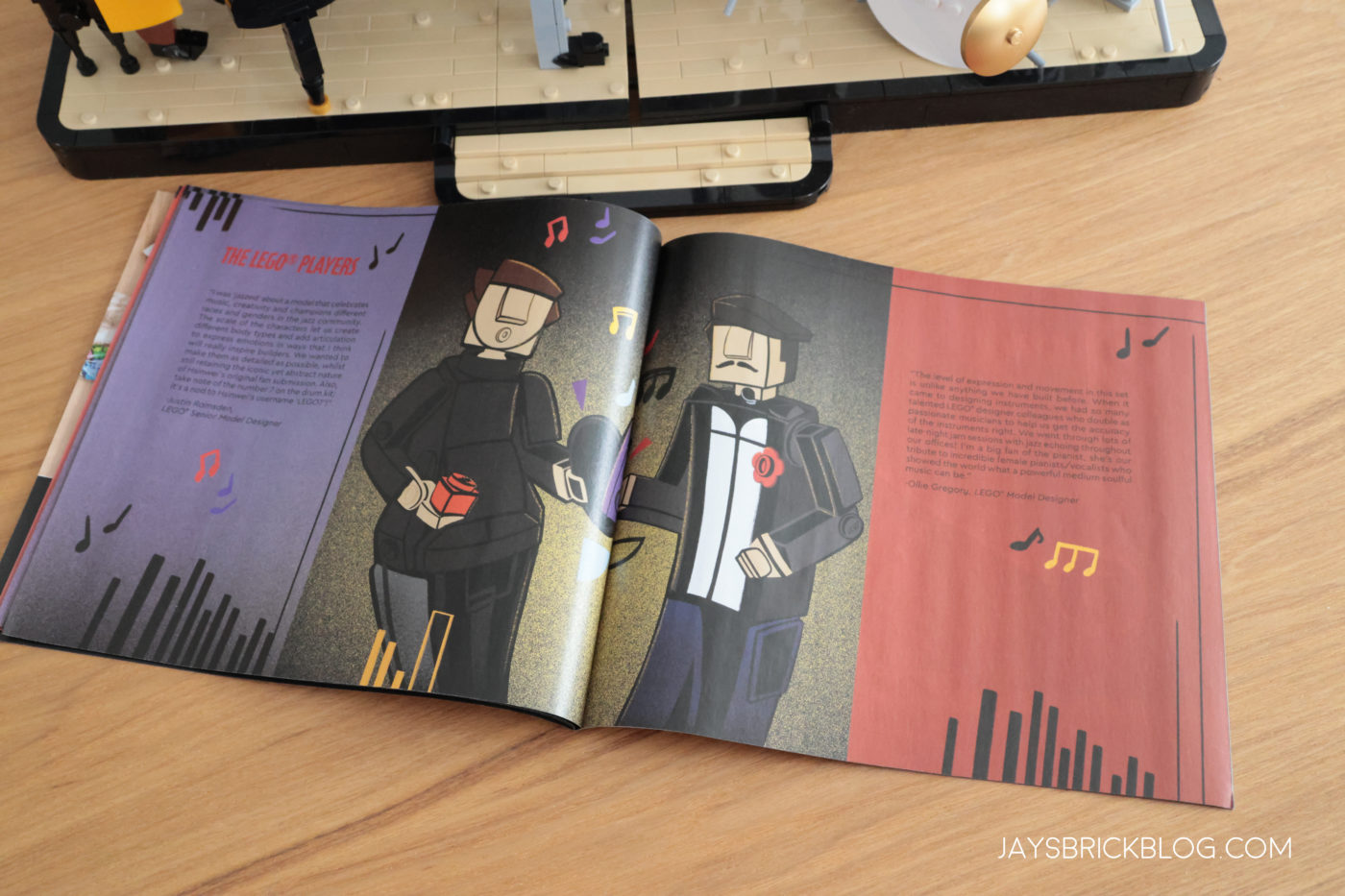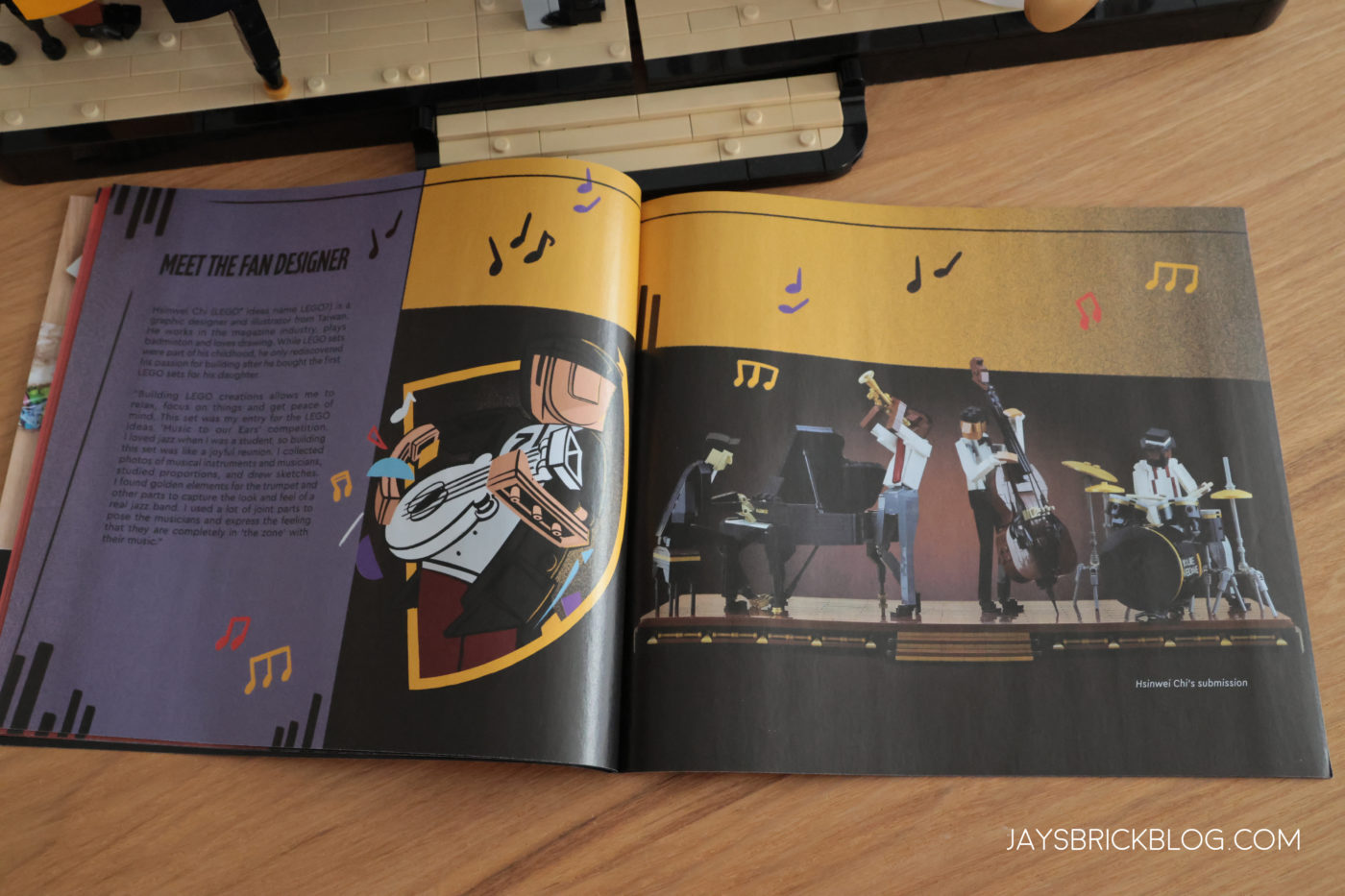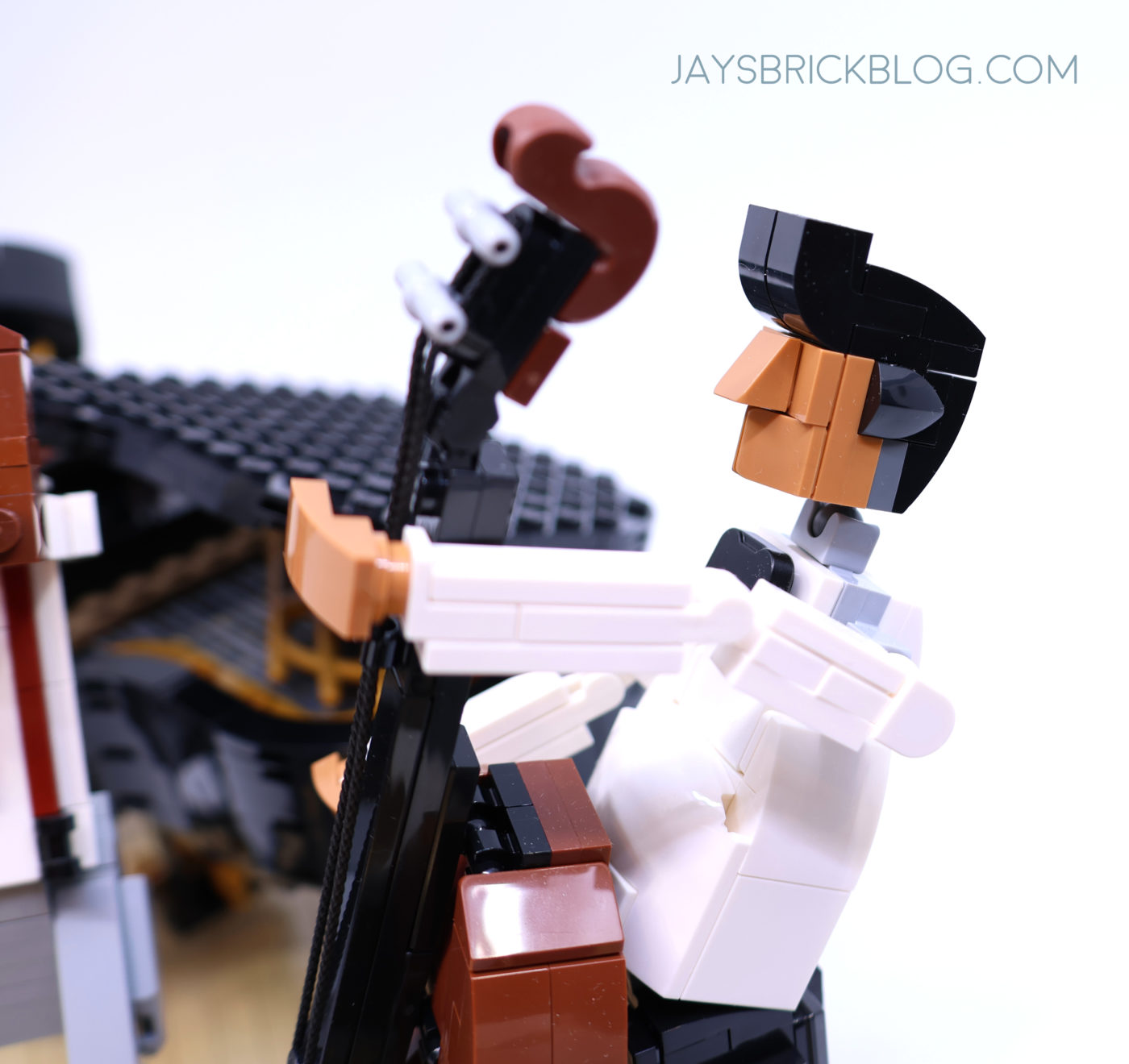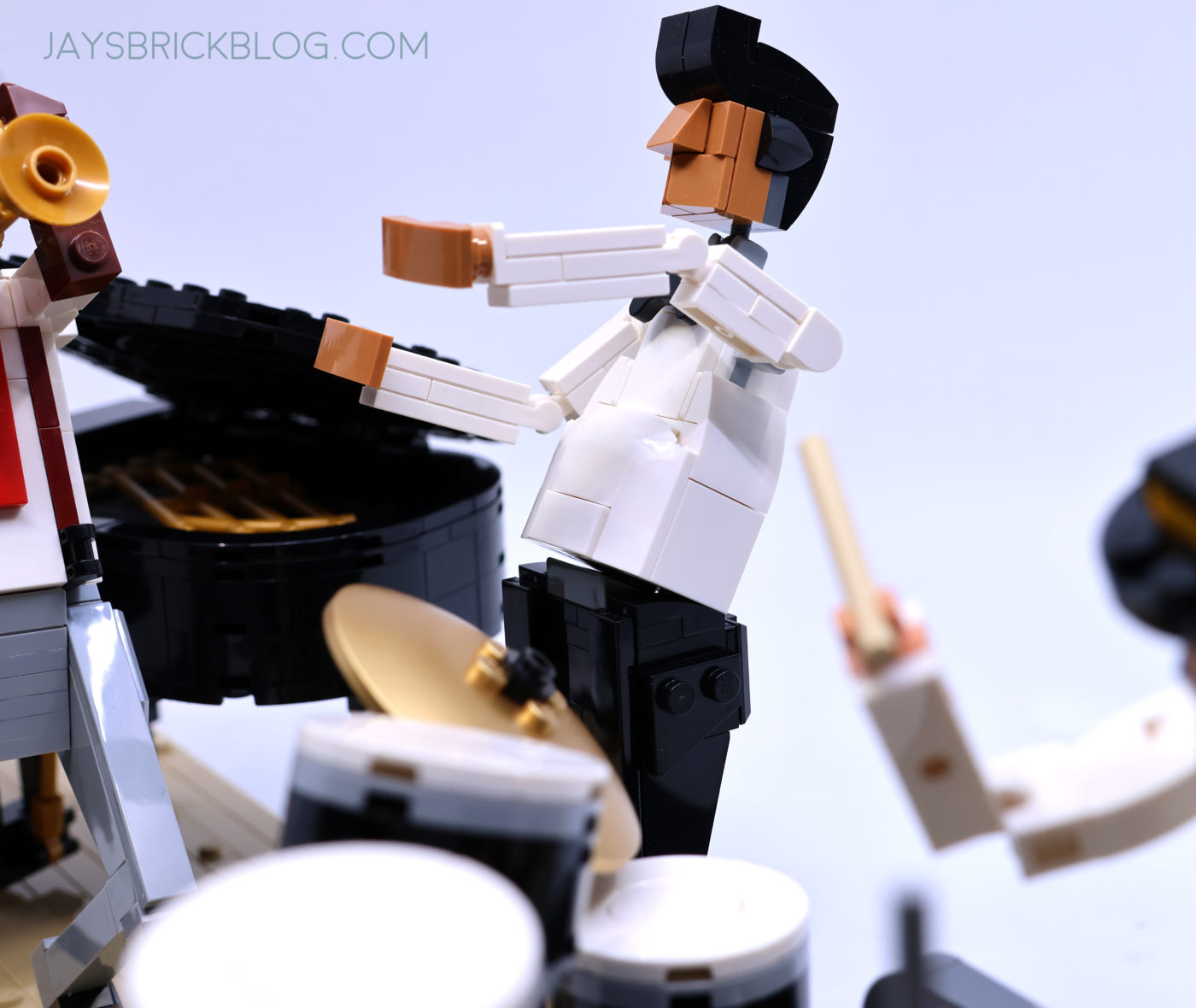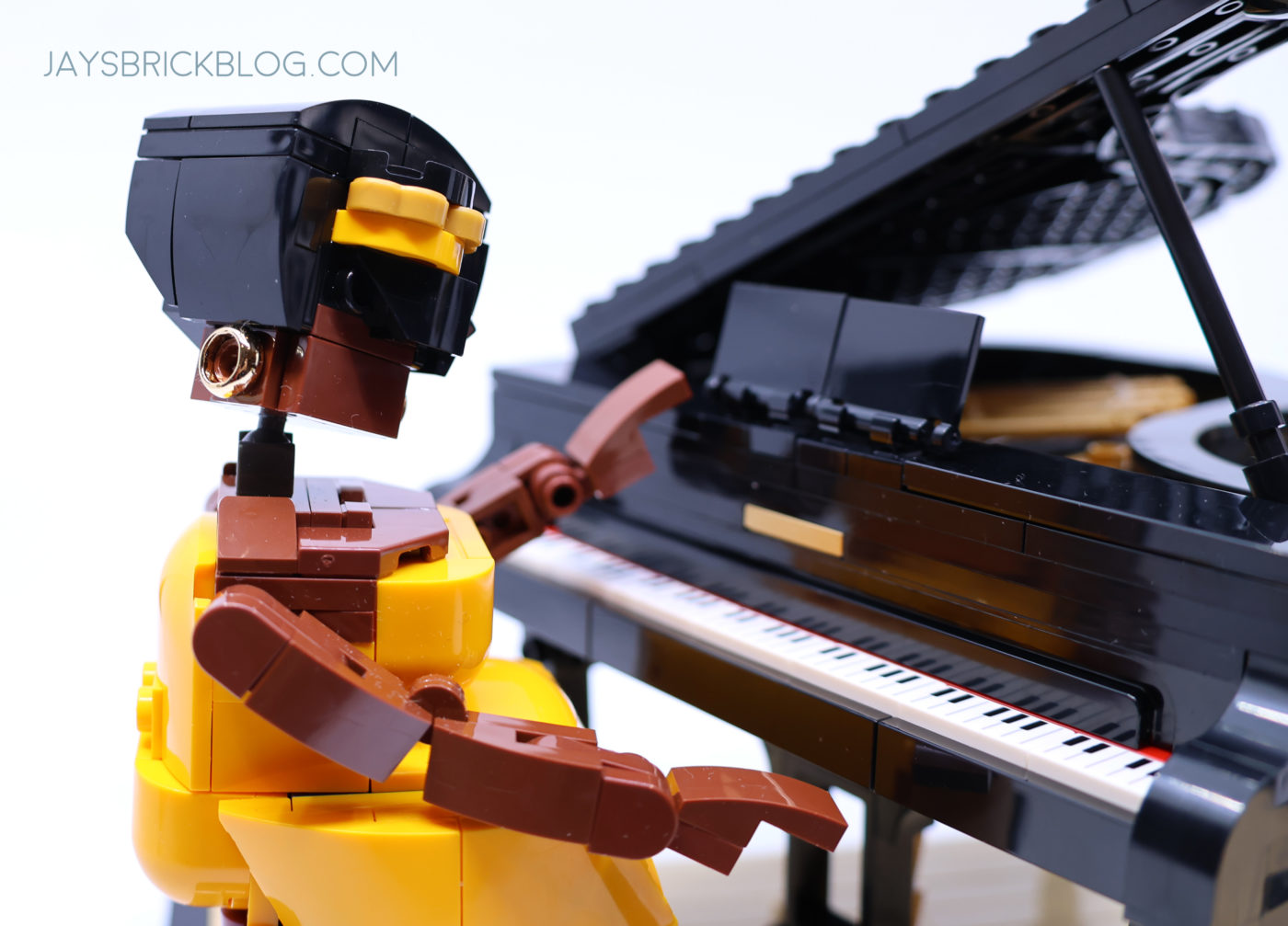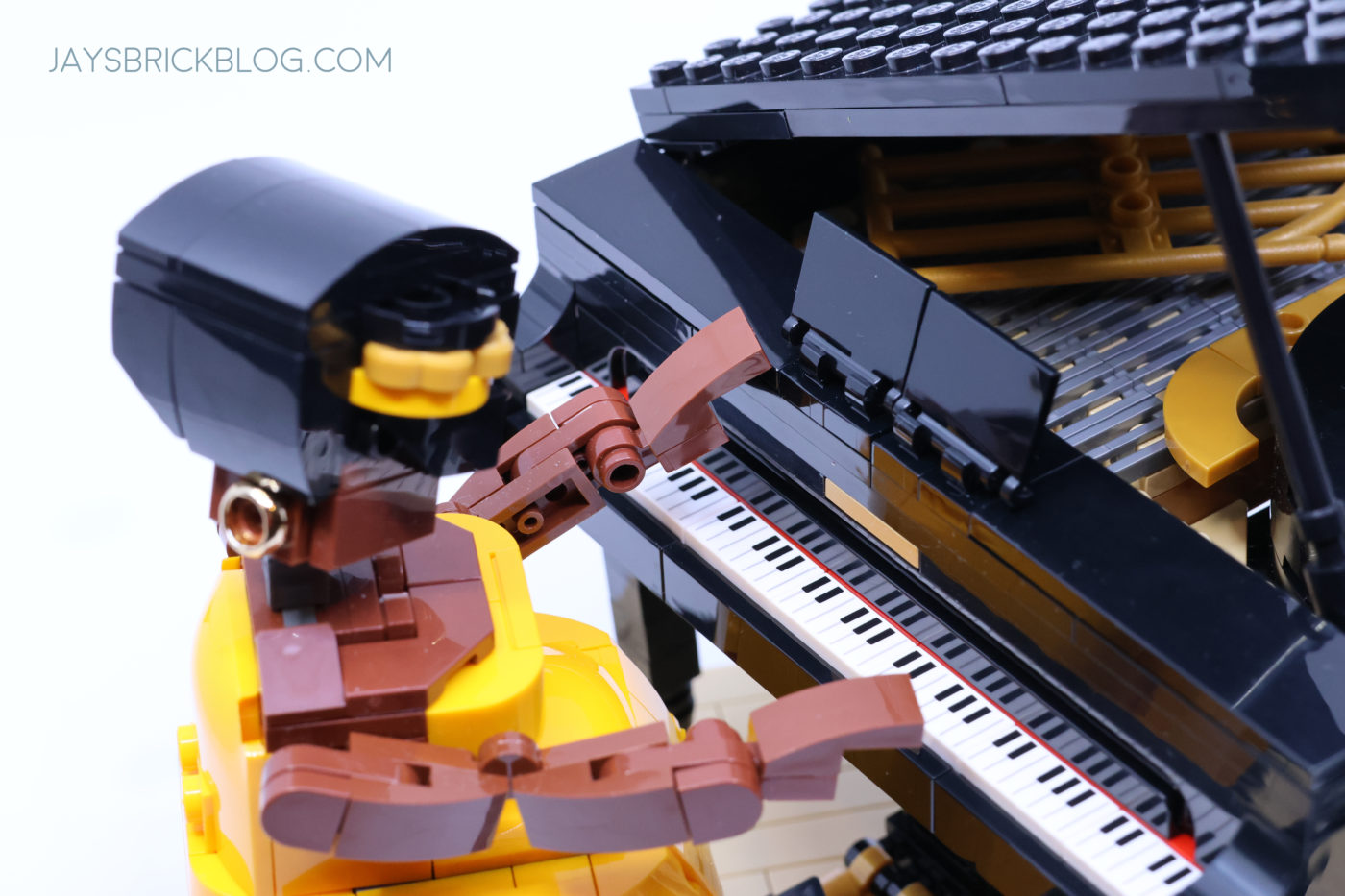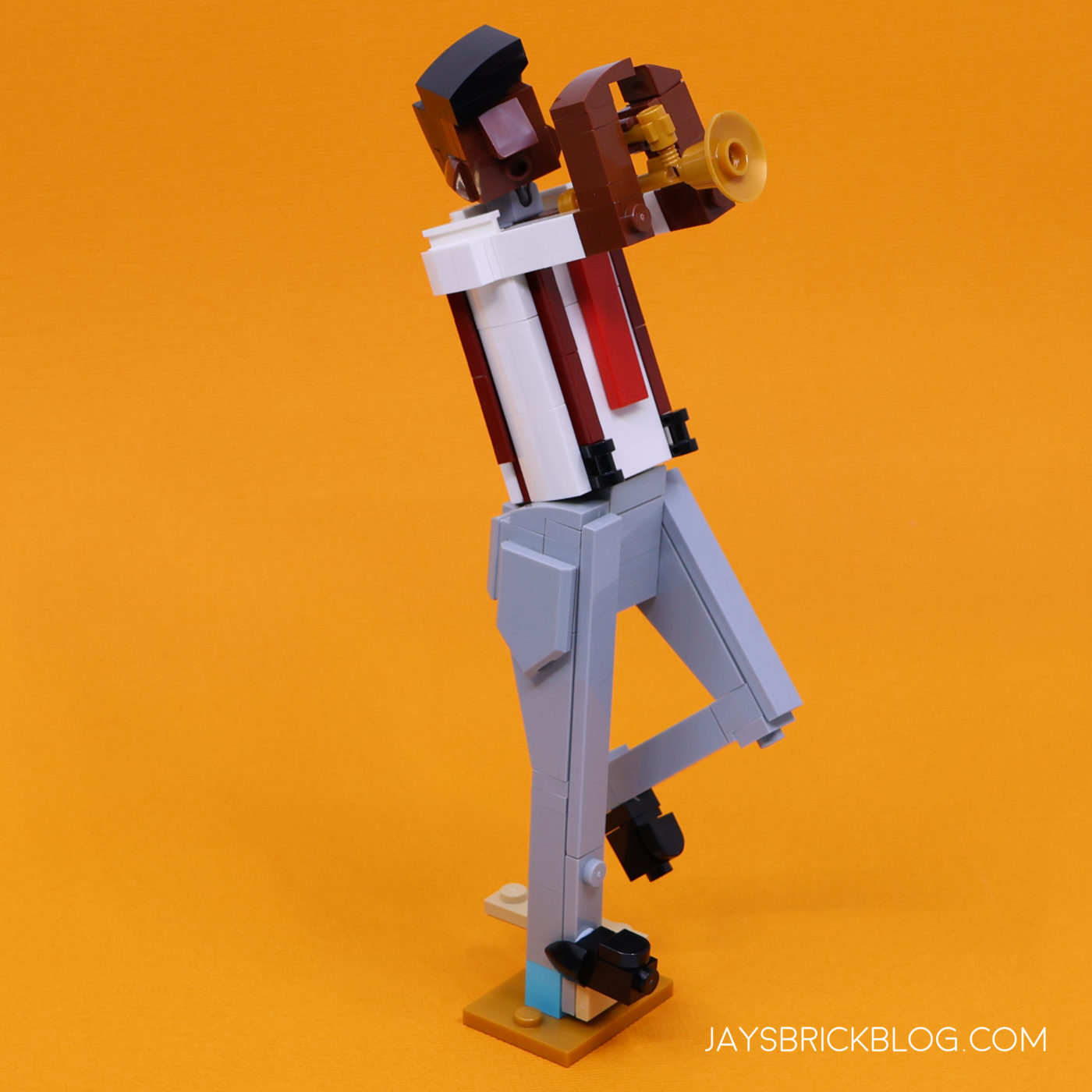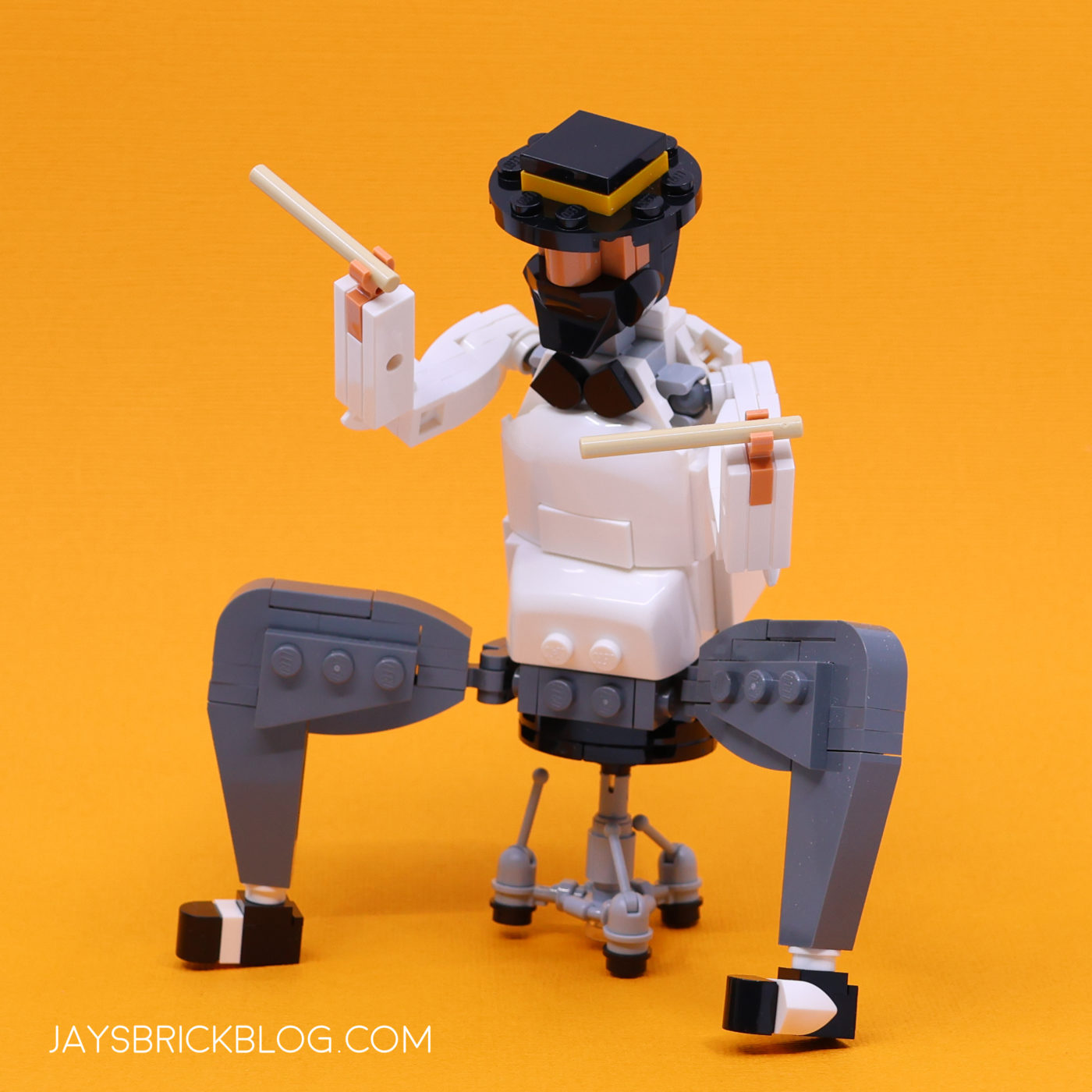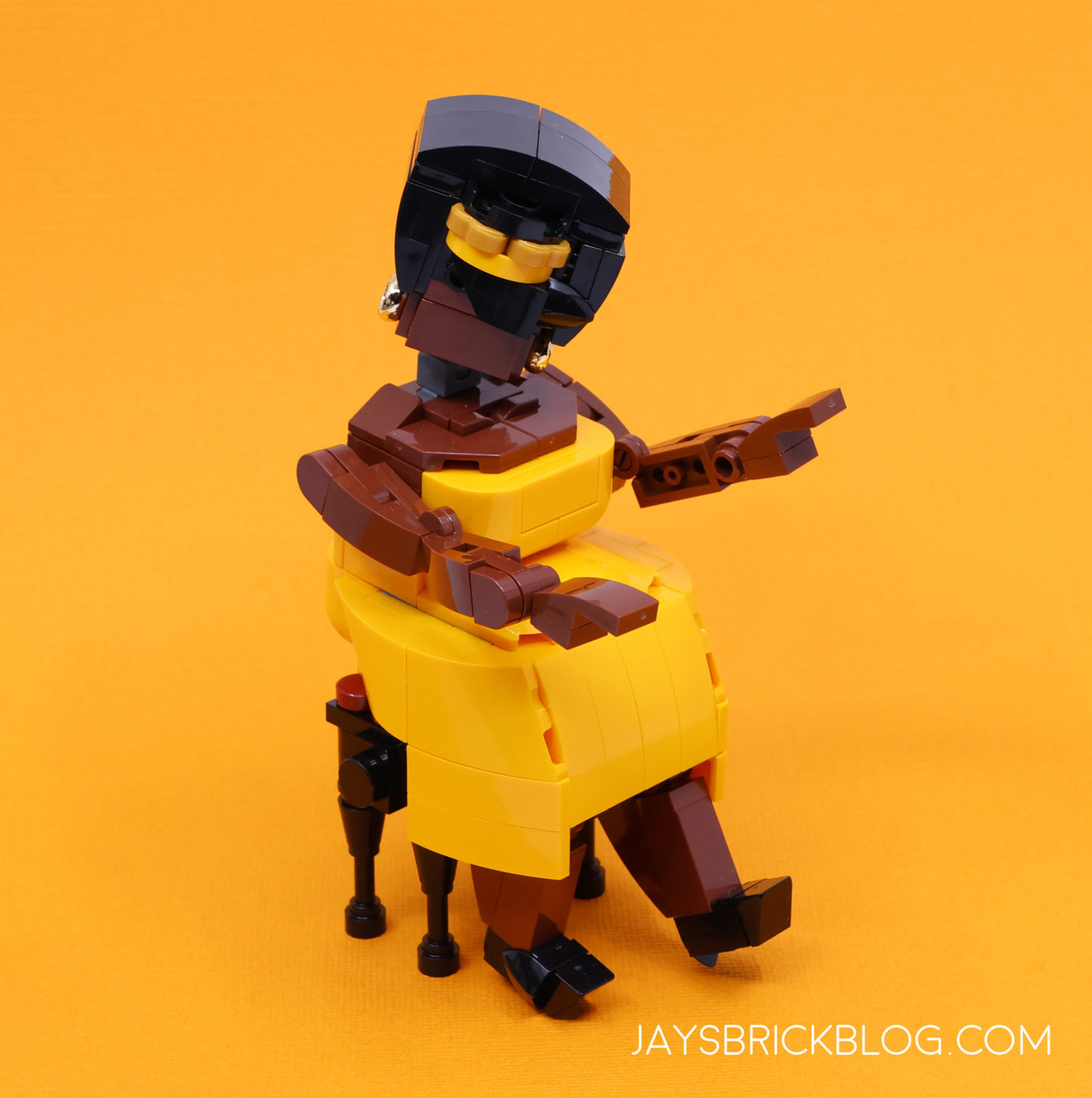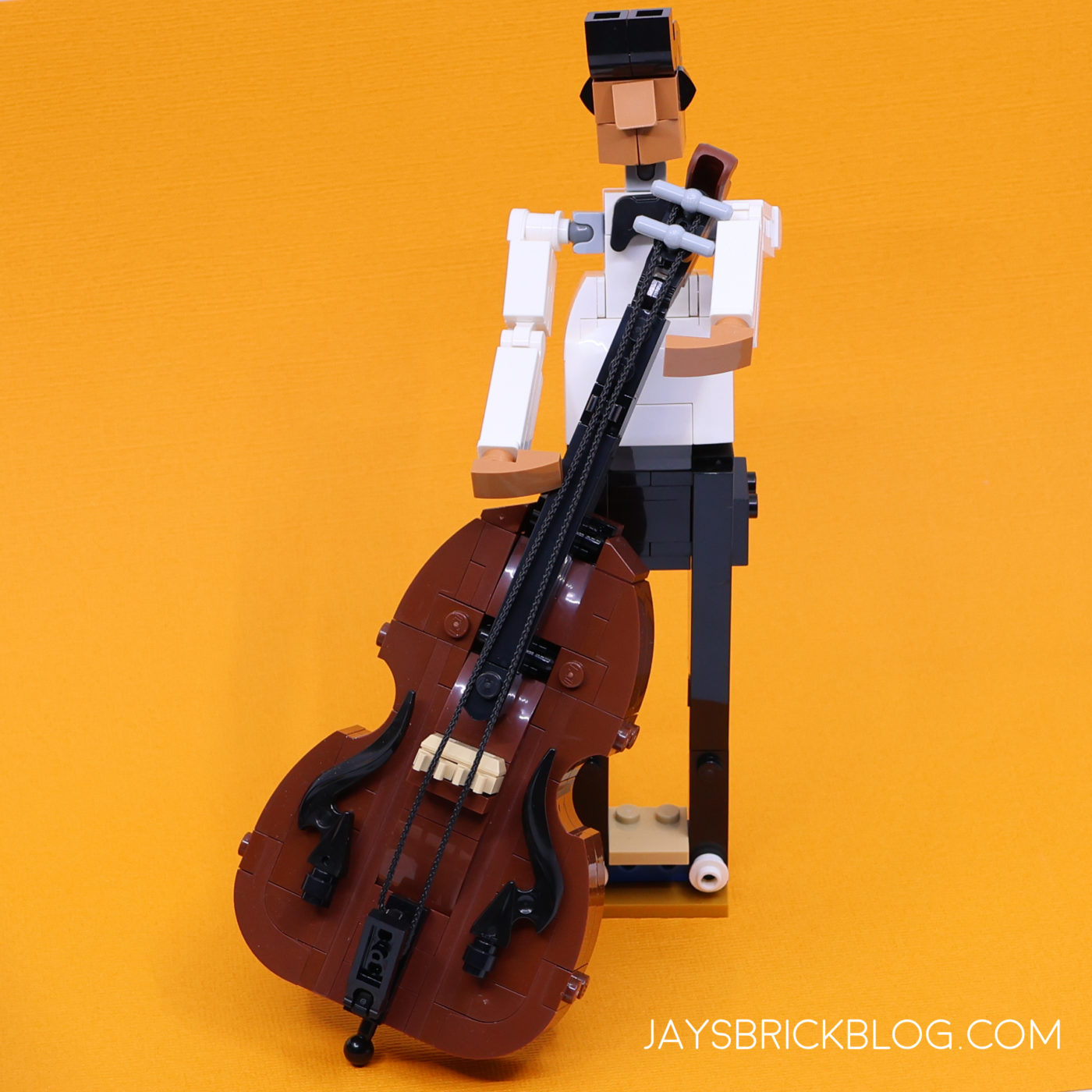Review: LEGO 21334 Jazz Quartet
 3
3

2022 has been a big year for LEGO Ideas, with one of the most varied years yet. LEGO Ideas has developed a (somewhat unwarranted) reputation as a theme that has relied a lot on intellectual property (IP)-based sets, but 2022 seems to have struck a nice balance, with only 2 proper IP based sets (Sonic the Hedgehog, and The Office). Well 3, if you count Vincent Van Gogh: The Starry Night.
One pleasant surprise from the 2022 LEGO Ideas slate has been 21334 Jazz Quartet which released in July 2022 (which feels like a lifetime ago!), and remains true to the LEGO Ideas pedigree – delivering an unusual, unique and unsuspecting LEGO building and display experience that you can’t easily find in other themes.
My review is a little late, as this one fell into my backlog, but after reviewing 21335 Motorised Lighthouse, I finally took the Jazz Quartet off my bookshelf where it’s been sitting since late June to finish up this review!
Oh, putting on your favourite jazz playlist, album or artist is absolutely essential – I like the classics, but also am a huge fan of Jon Batiste, and have Hollywood Africans playing as I write this review. Green Hill Zone (yes, Sonic) is a particular delight on that album – and is perfect for cosy and quiet nights.
In fact, if you’re specifically looking for suggestions, the design team put together this spotify Jazz playlist filled with tracks that the designers listened to to get inspired while building the set.
See below for regional pricing and product links – 21334 Jazz Quartet is available now from LEGO.com, or your local LEGO store.
- 21334 Jazz Quartet [US] – US$99.99
- 21334 Jazz Quartet [AUS] – AU$169.99
- 21334 Jazz Quartet [UK] – £89.99
- 21334 Jazz Quartet [EU] – €99.99
- 21334 Jazz Quartet [CA] – CAD$129.99
Special thanks to LEGO for sending this set for this review!
21334 Jazz Quartet Set Details
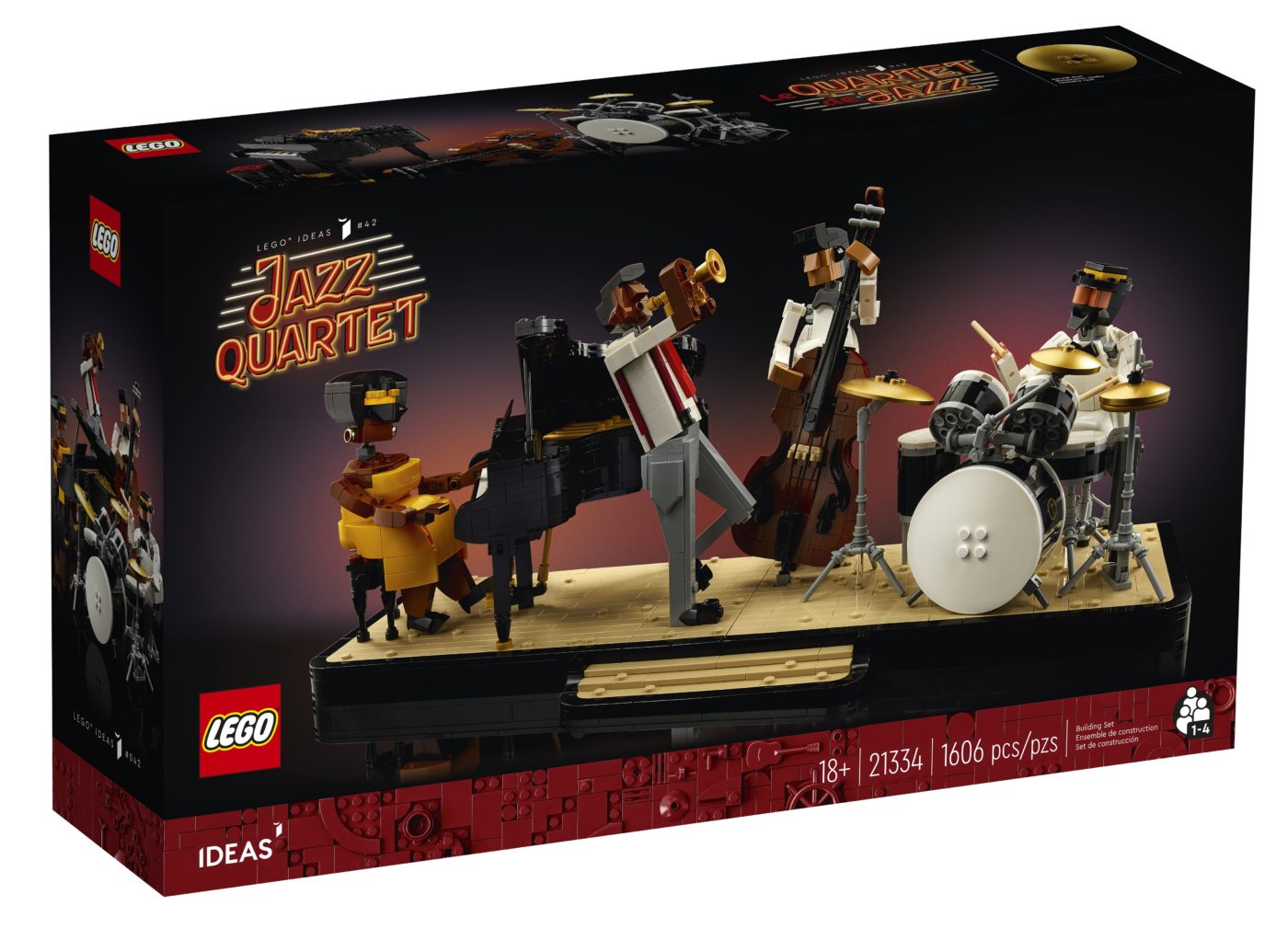
Name: Jazz Quartet
Set Number: 21334
Pieces: 1606
Price: AU$169.99 | US$99.99 | £249.99 – Buy from LEGO.com [AUS] [USA] [UK]
Exclusive to: LEGO.com / LEGO Stores
Theme: Ideas
LEGO Designers: Justin Ramsden, Ollie Gregory, Maria Salgado (Graphic Design)
Release Date: 1 July 2022
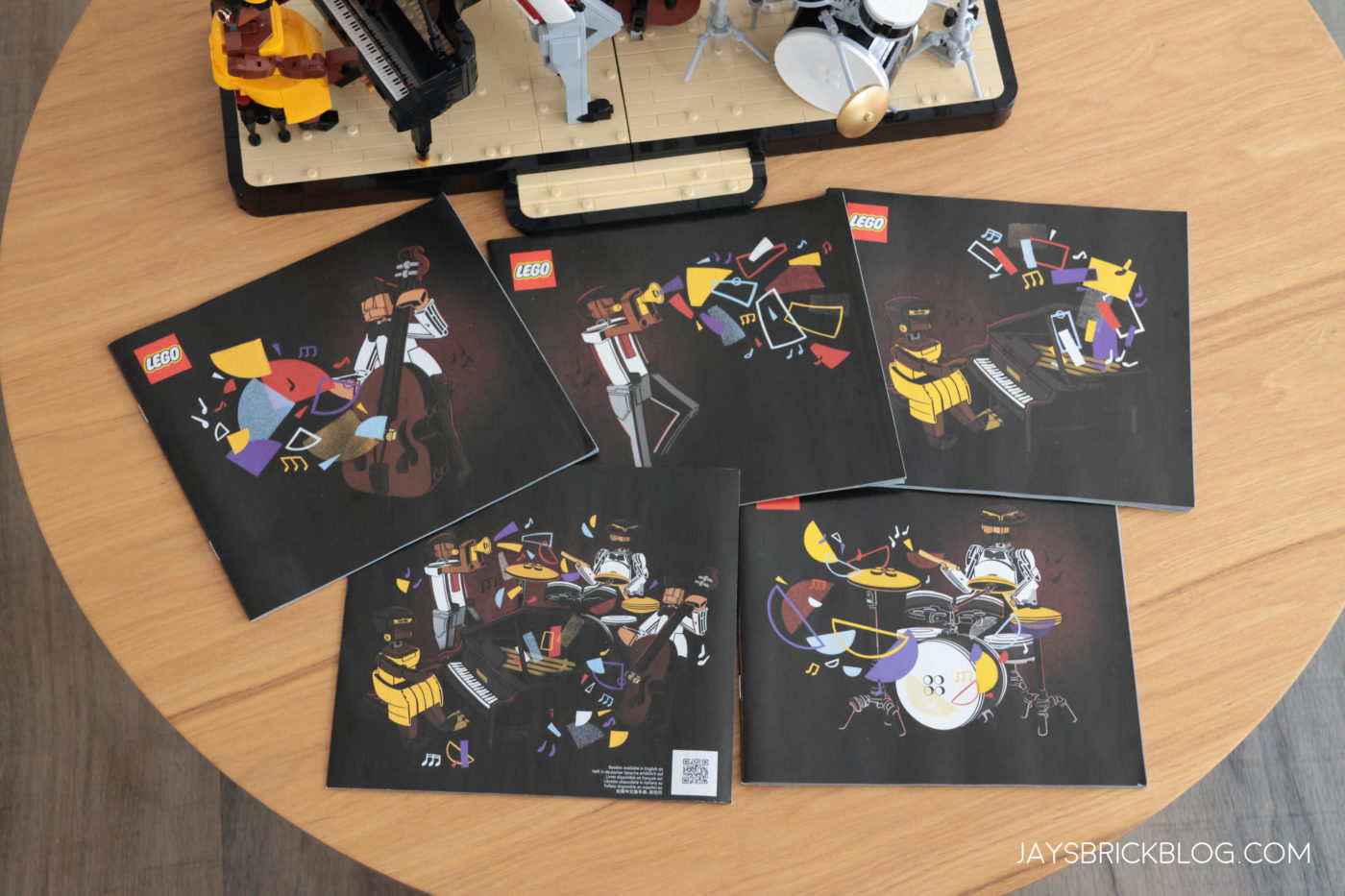
The unboxing experience of 21334 Jazz Quartet starts off well, with not a sticker sheet in sight, and then you’re greeted with these incredibly beautiful manuals.
Five booklets are included, one for each Jazz Quartet member, and one (with the group illustration) for the introduction to the set, designer profiles and more.
Graphic Designer Maria Salgada has gone to town with these abstract manual designs, which are just so fun, and really set the mood for the set.
Oh, and because there are individual manual booklets for each Jazz Quartet band member, you are encouraged to build this together with a group or partner, making this an excellent group activity.
The theme of the artwork on the manual covers extends within, in the fan designer, set design team and background information section, and I especially love how fan designer Hsinwei Chi, and set designers Justin Ramsden and Ollie Gregory were depicted in the same style as well.
The Build Experience
The build experience of 21334 Jazz Quartet a delight, with some especially ingenious techniques. The build together feature is always a welcome addition, as it just enhances and opens up the build experience to be shared with others.
The build itself was great fun, with highlights being the array of nice part usage that pleasant surprise you as you traverse through the build. The abstract brick-built people are really fascinating, each with their own design quirks and personalities.
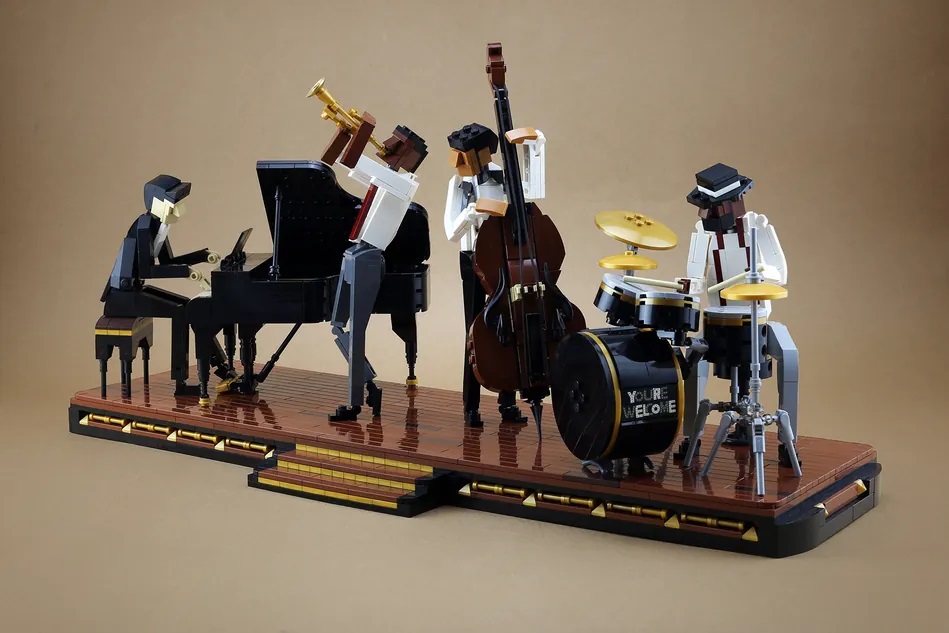
A few changes have been made by the design team to Hsinwei Chi’s original design, most notably the addition of a female pianist, the change of the floor/stage to a lighter tan, and the people are less lanky and stick-ish, with more realistic proportions and body shapes.
In all, the essence and spirit of the design hasn’t altered much, staying true to Hsinwei Chi’s vision.
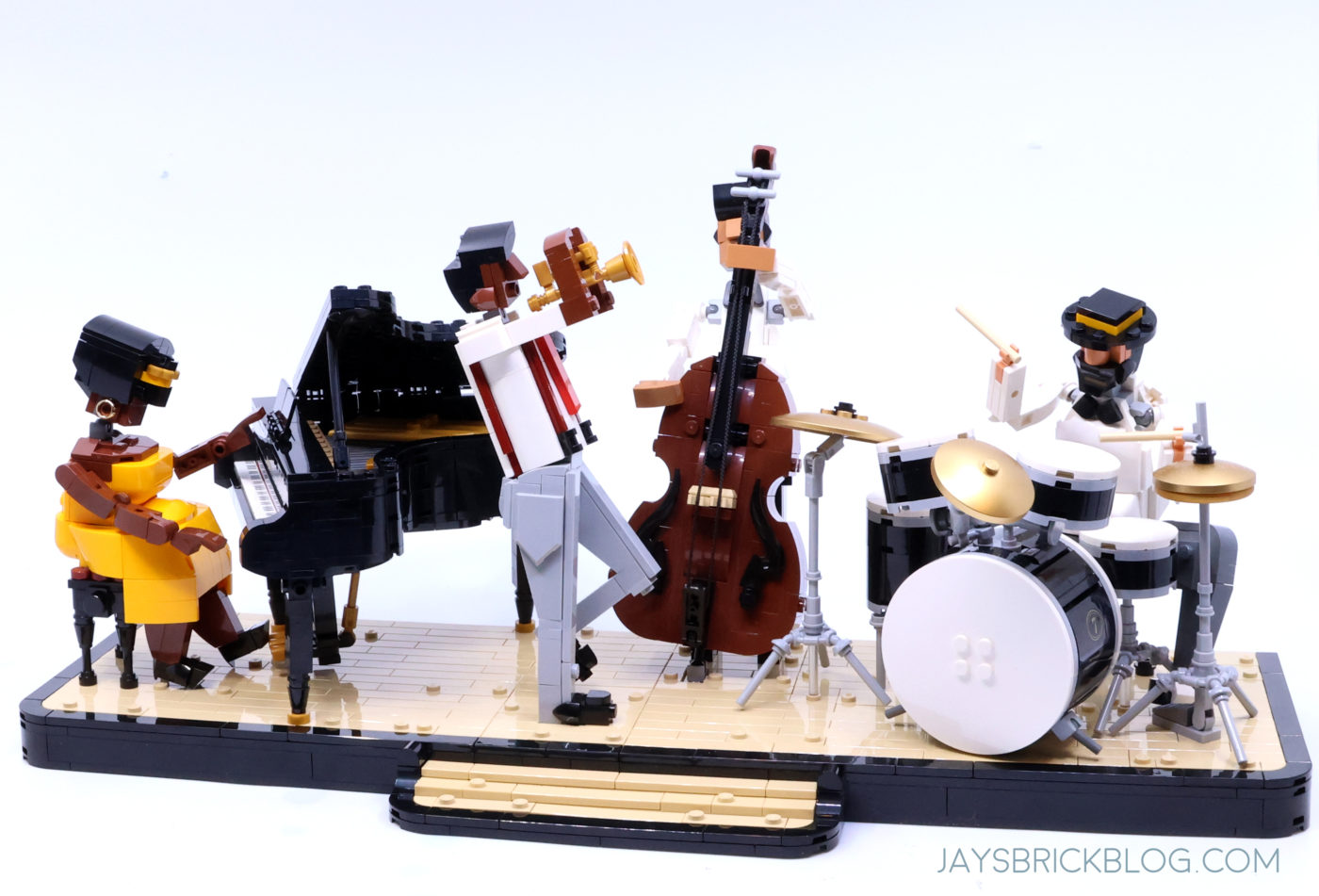
Here’s the completed model, which hosts the 4 Jazz musicians and their instruments on a tan stage. First impressions of the set was just how large, and wide it was. The entire model spans 43cm (17″) wide – quite the substantial footprint, that is neither too large and awkward, nor too small and insignificant.
21334 Jazz Quartet is first and foremost a display model, meant to be enjoyed as a static piece. The musicians appear frozen in place, mid-groove, and despite it being still, there’s a lovely sense of motion and life to the musicians, which is a phenomenal design achievement.
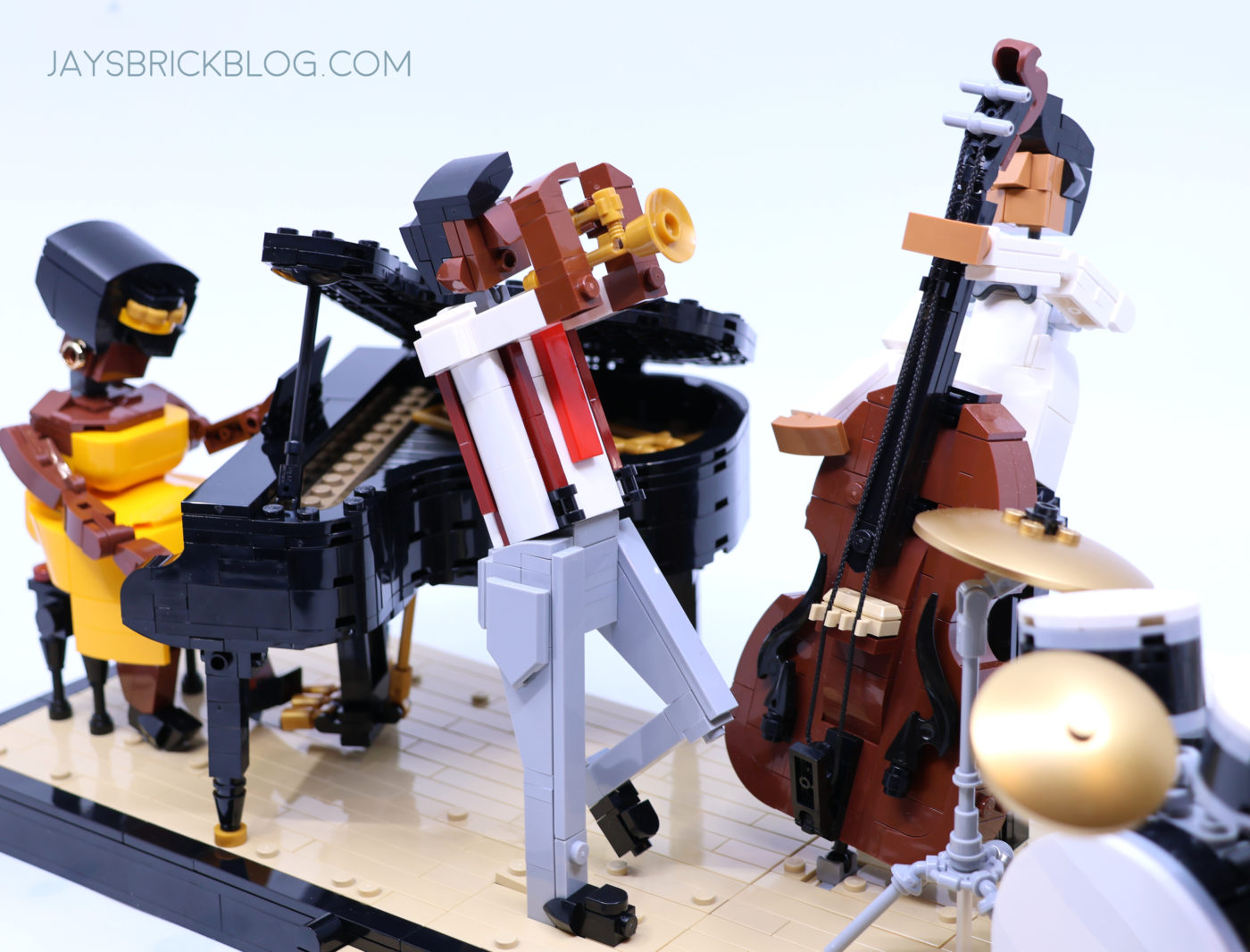
The first musician you assemble (if you go according to order but you’re welcome freestyle!) is the Trumpeter, situated in the middle of the stage. His pose, with one leg sticking up, is one of the most animated of the group.
Compared to the original, small cosmetic changes were made, such as colour swapping his tie from dark red to red, but giving him dark red suspenders which is a fun touch, and the inspired use of a jumper plate for his mouth ties it all together.
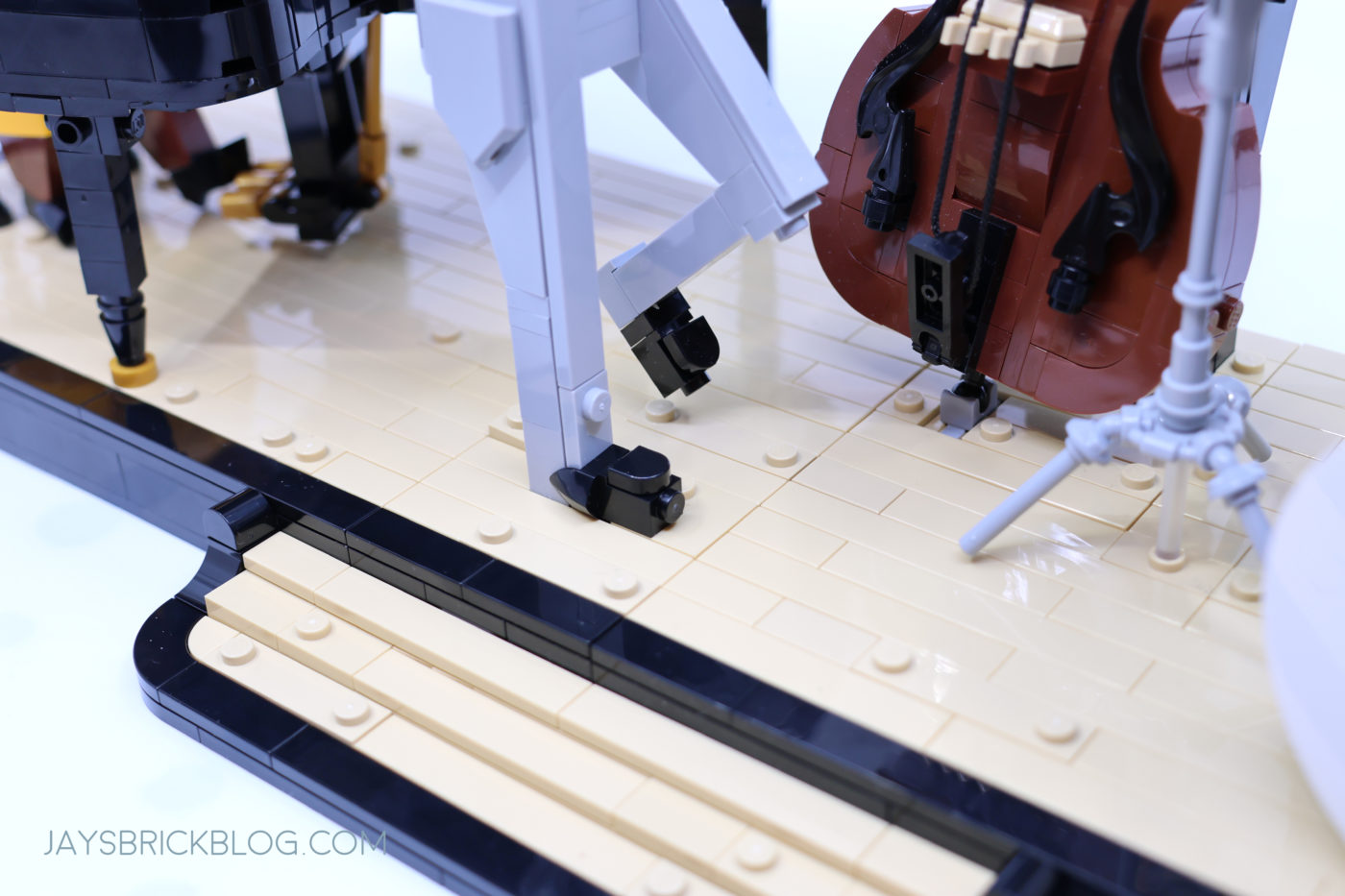
One of my favourite things about the Trumpeter are his shoes – simple, yet they grab your attention as you look upon his lanky legs.
The Trumpeter is also “anchored” to the stage, so you can’t move him out unlike the other musicians, but it’s necessary for stability.
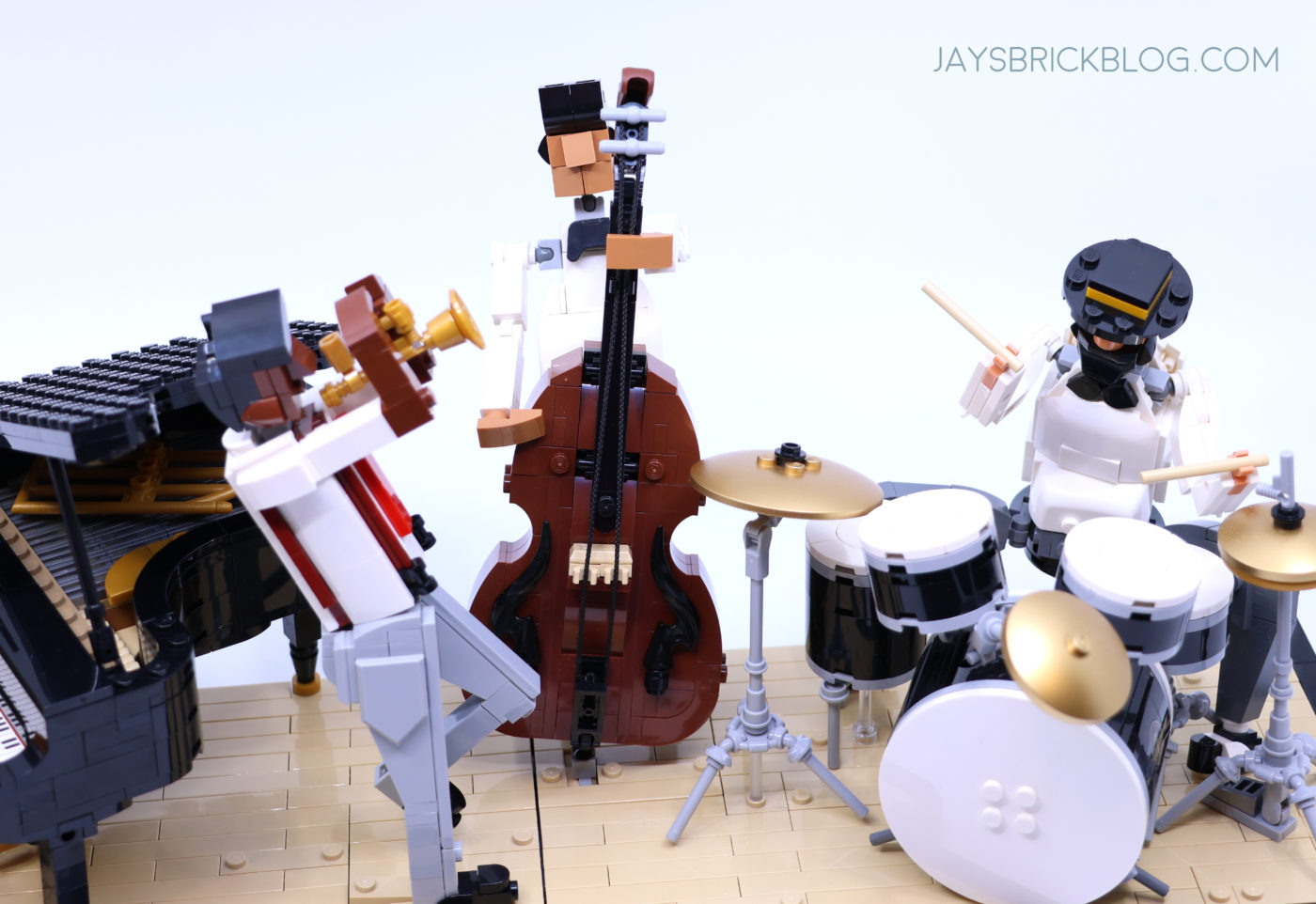
Bags 3 and 4 assemble the bassist, along with his Double Bass, which is almost as tall as him.
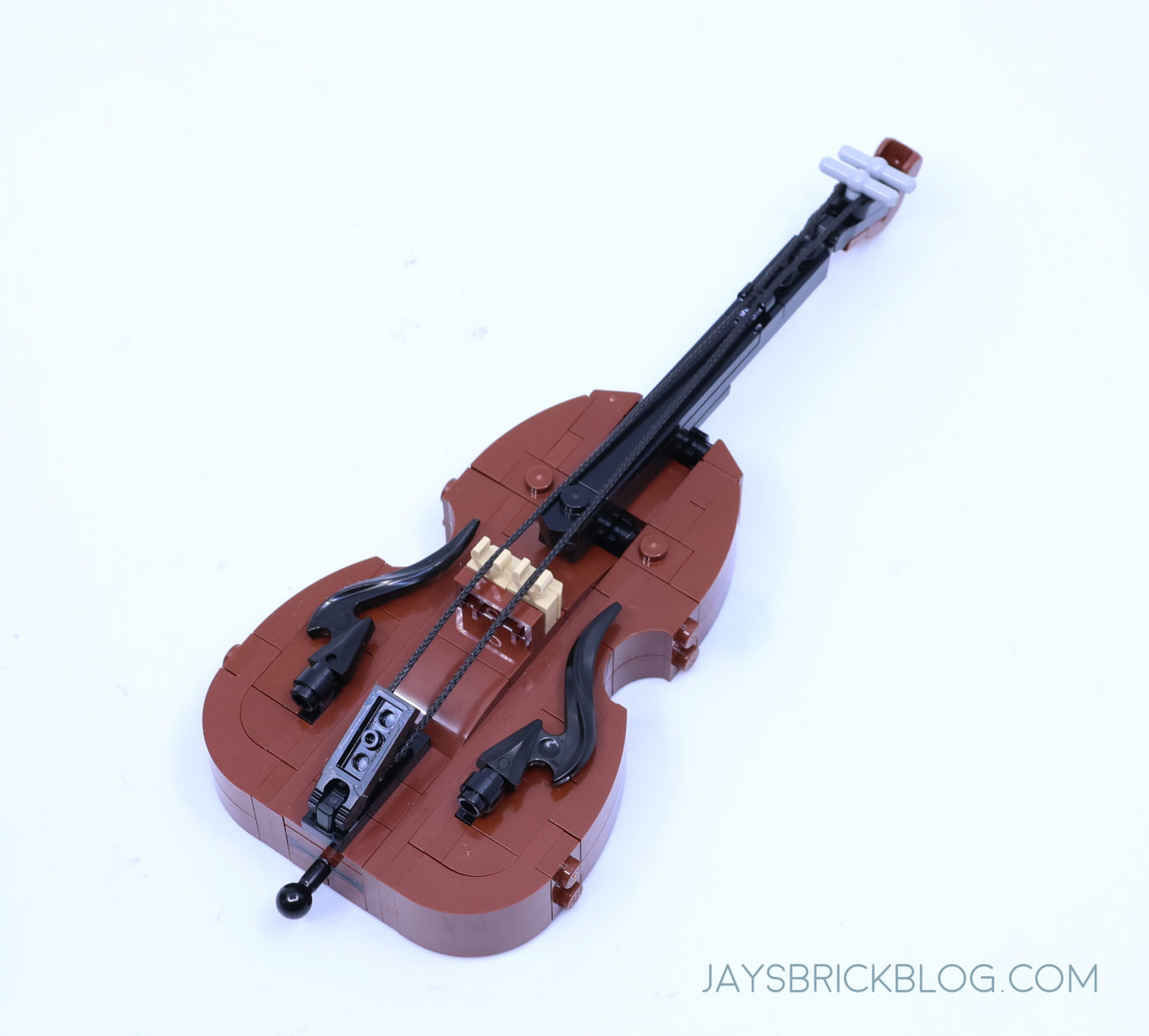

Here’s a look at the Double Bass. My wife helped build this, and she really appreciated the detail used here – sloped curves are used to great effect to nail the body’s shape, and 2 strings are also used, although it would’ve been nice if there were 4-strings just like a real one.
The Bassist’s has a really neat hairstyle, with some really elegant techniques, and he also has quite a shapely body, with a slight belly, and also a butt. The realistic body shapes are one of the welcome design changes, as they do give the characters a more grounded and believable look.
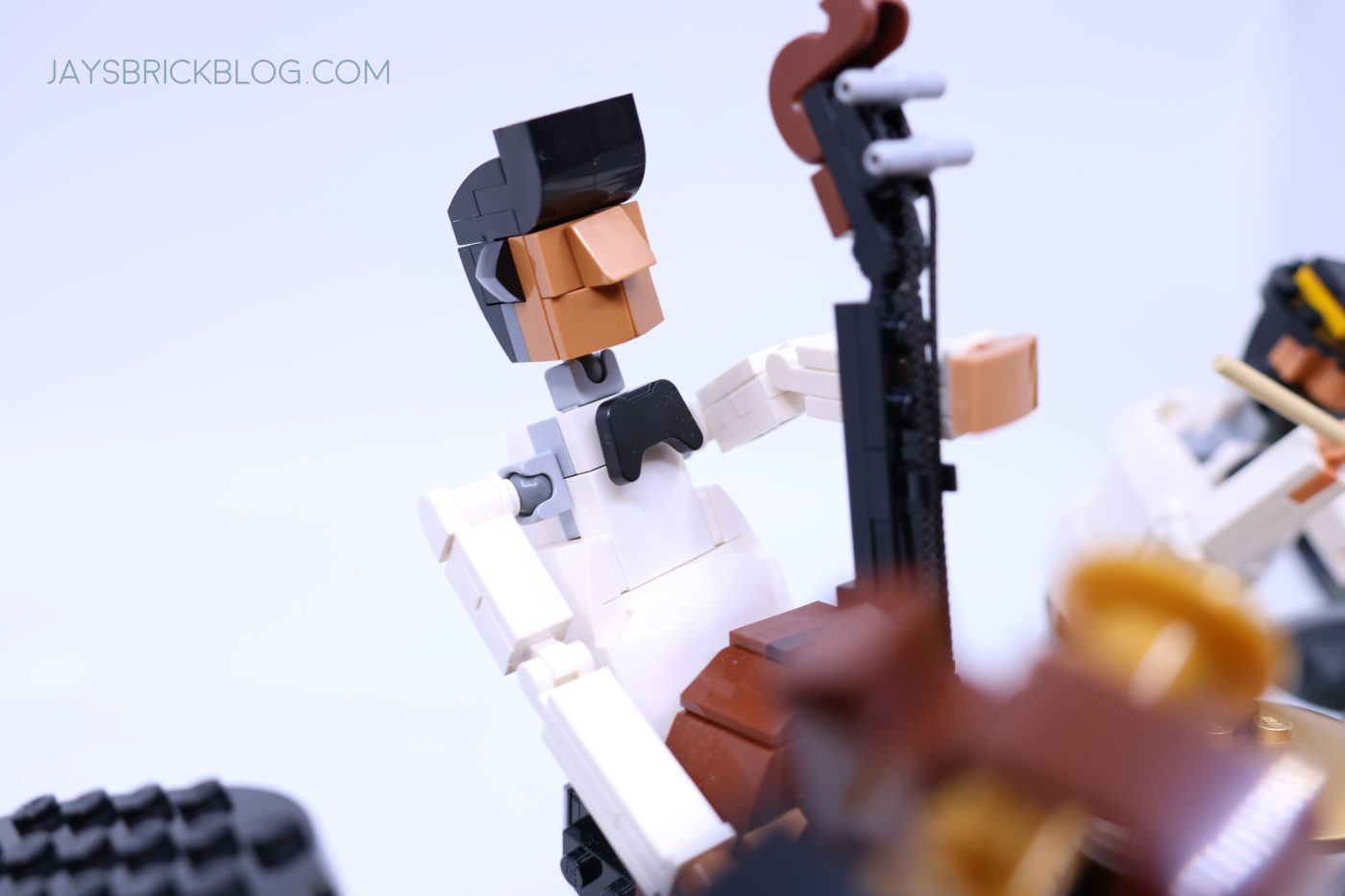
Speaking of nice part usage, I really appreciate the use of a blank video game controller as a bowtie.
In this photo, you’ll also notice one of the aesthetic compromises, which is the use of these dark grey and grey ball joints, which doesn’t look as clean or elegant.
Ball joins were hidden slightly better in the original design, but the changes here seem to have been made to improve the articulation and positioning of the jazz musicians’ limbs. They’re not detrimental, but when you look close enough, it’s very hard to unsee them.
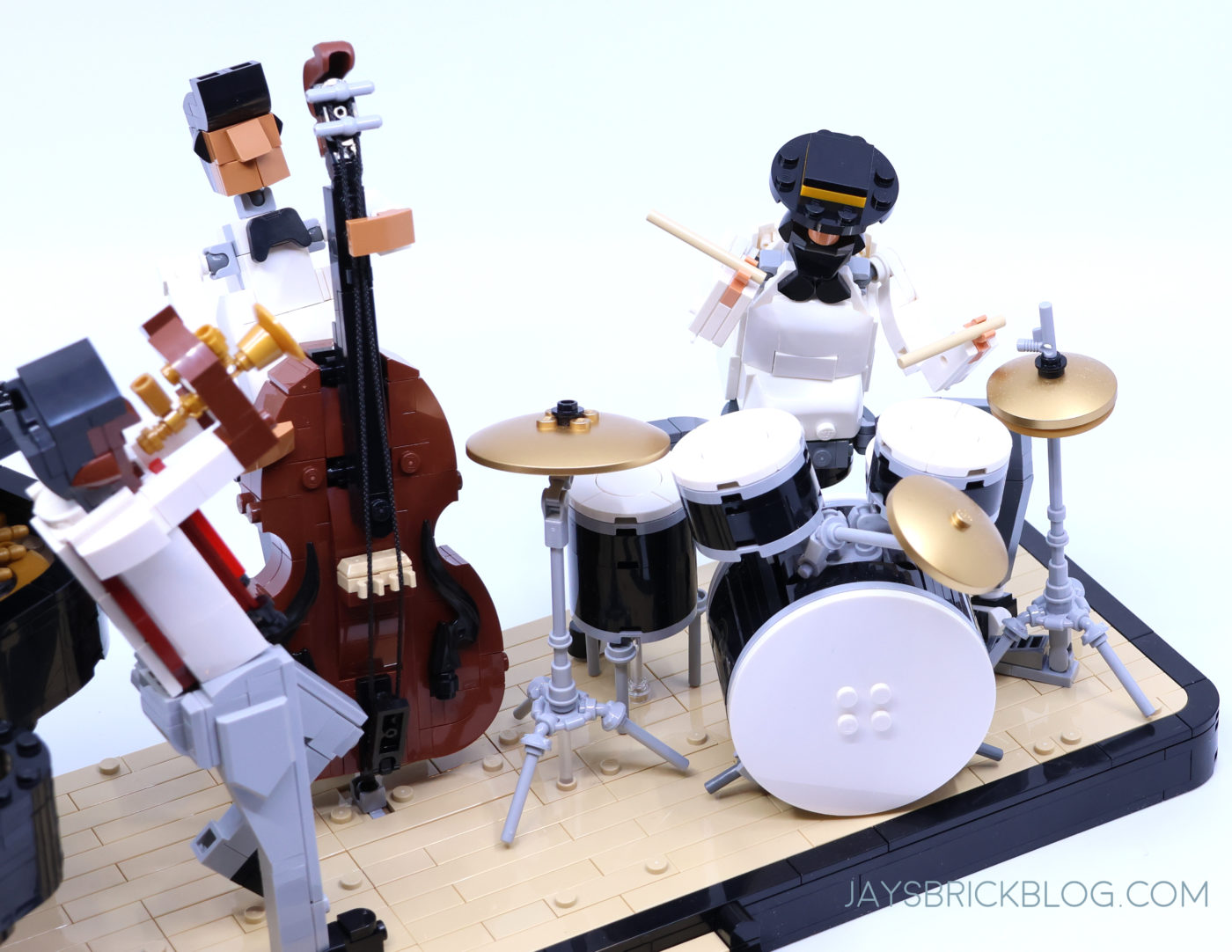
Bags 5, 6 and 7 build the drum kit, drummer and the stage section he occupies.
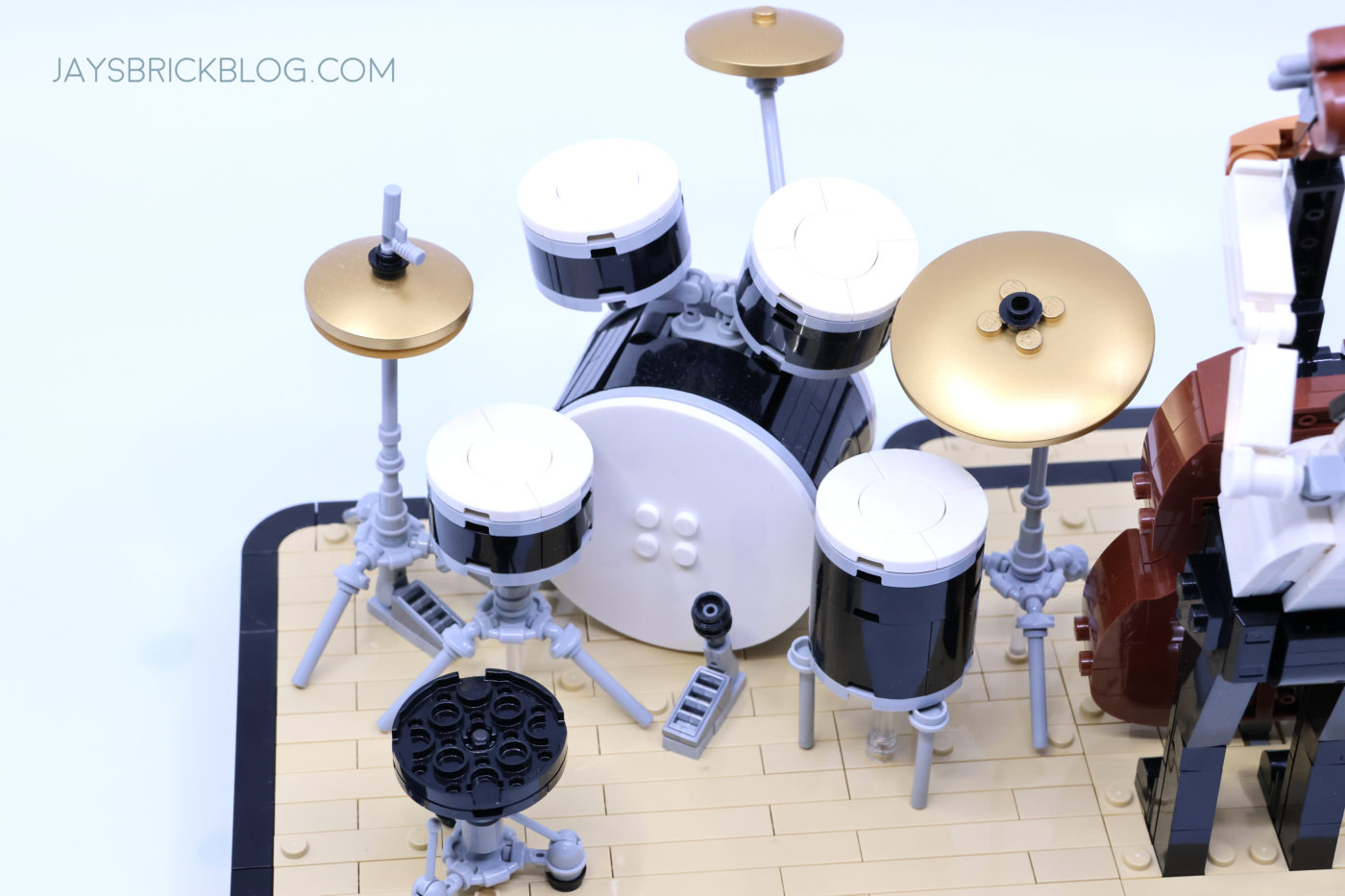
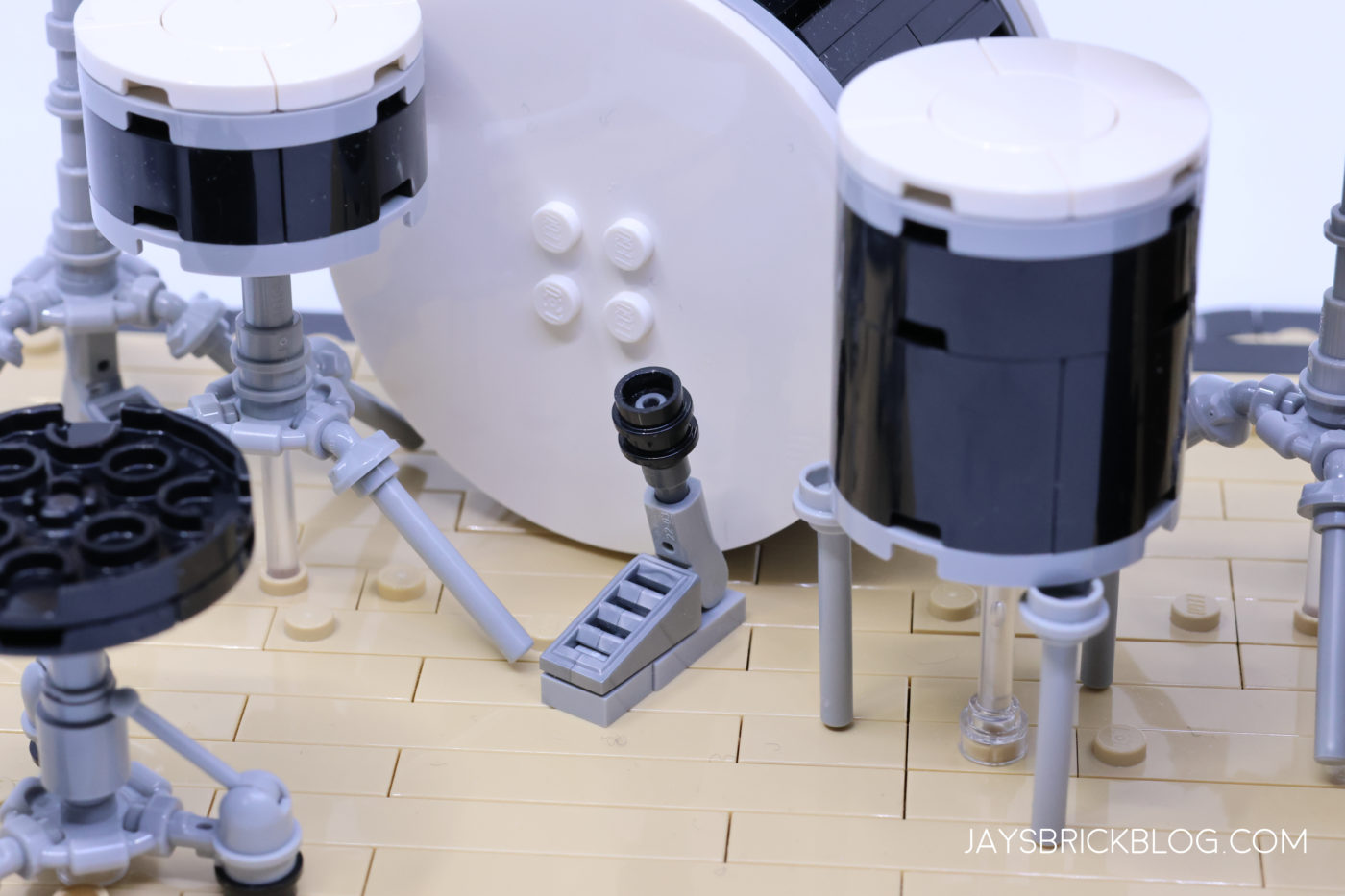
The drum kit is done very nicely, with some really cool details like the bass drum pedal, drum lacquered cymbals adding a nice pop of colour to the model.
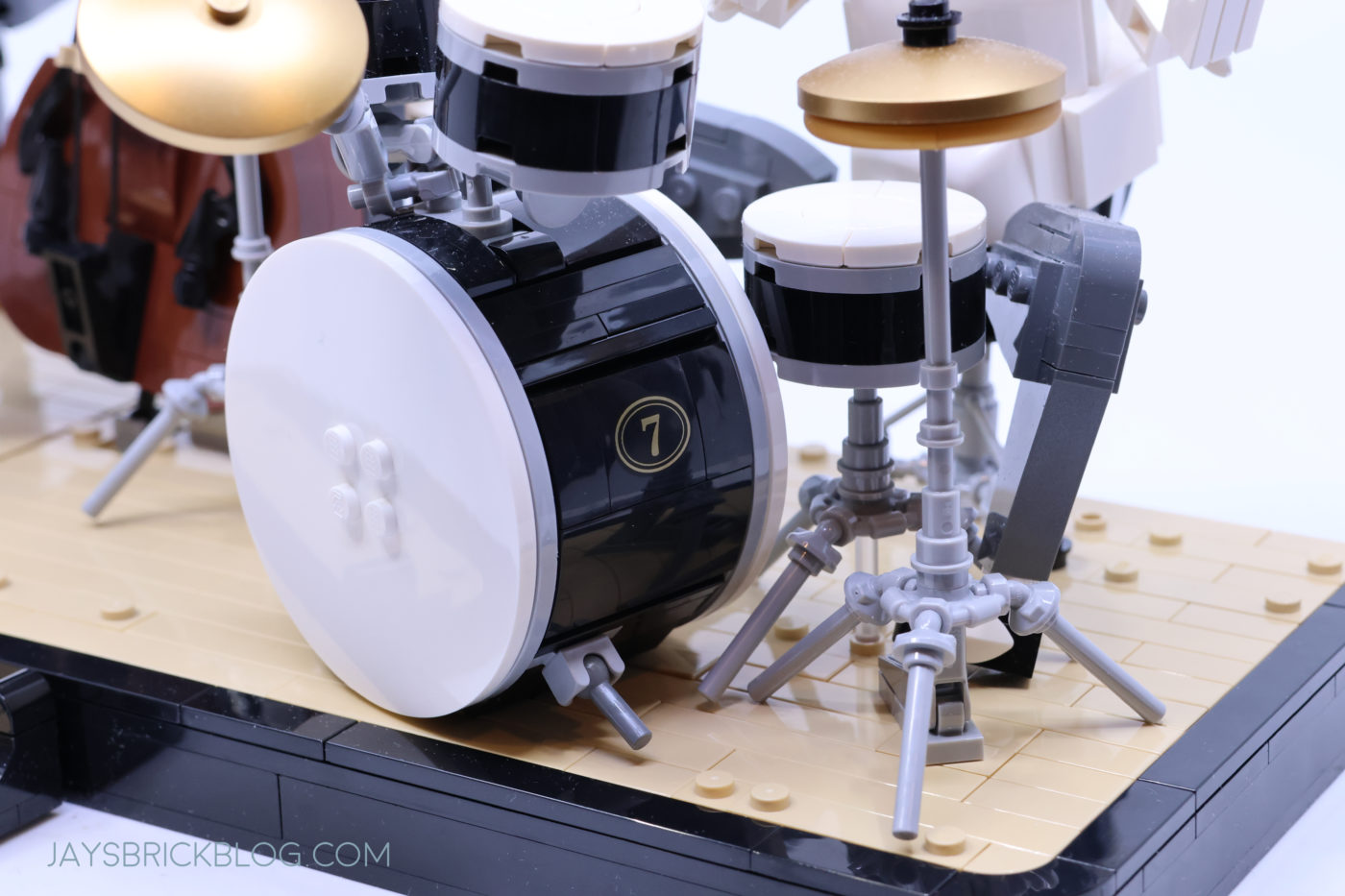
There is a small printed 7 on the bass drum, which is a nod to Hsinwei’s username – LEGO7_Creation that he uses across social media – a nice nod to immortalise himself in a LEGO set.
The drum kit is decent, if a little unremarkable. It’s basic, and does what it needs to do, and outside of adding drum-lacquered silver elements for the stands to really make it pop, there isn’t much you could do to make it more interesting.
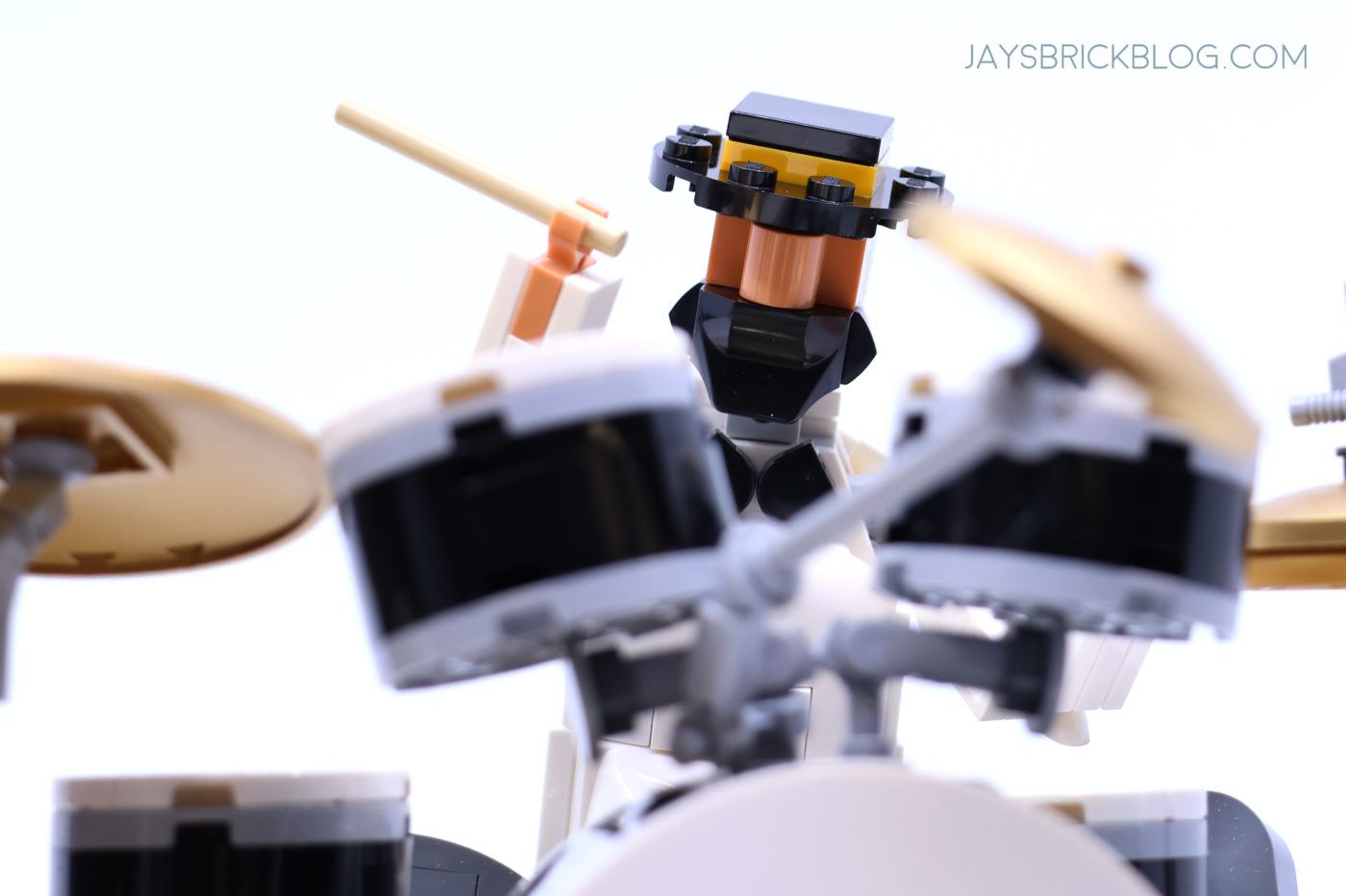
The drummer himself is great, with some really subtle build techniques used for his facial features. The large nose, and beard gives off a look of intense focus and concentration

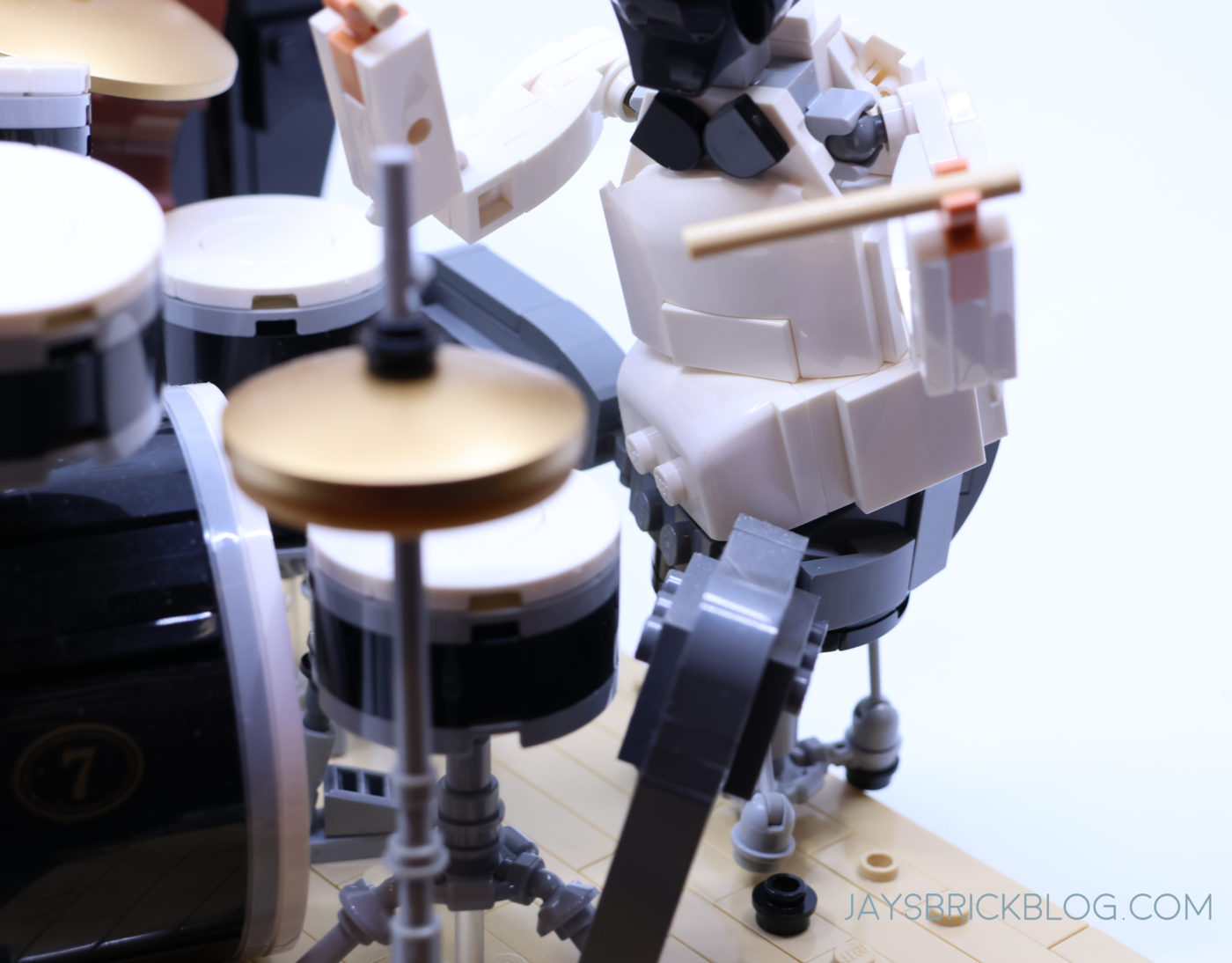
The drummer also has a rather large belly, which I think is great as it gives him a bit of an identity, and promotes some body diversity.
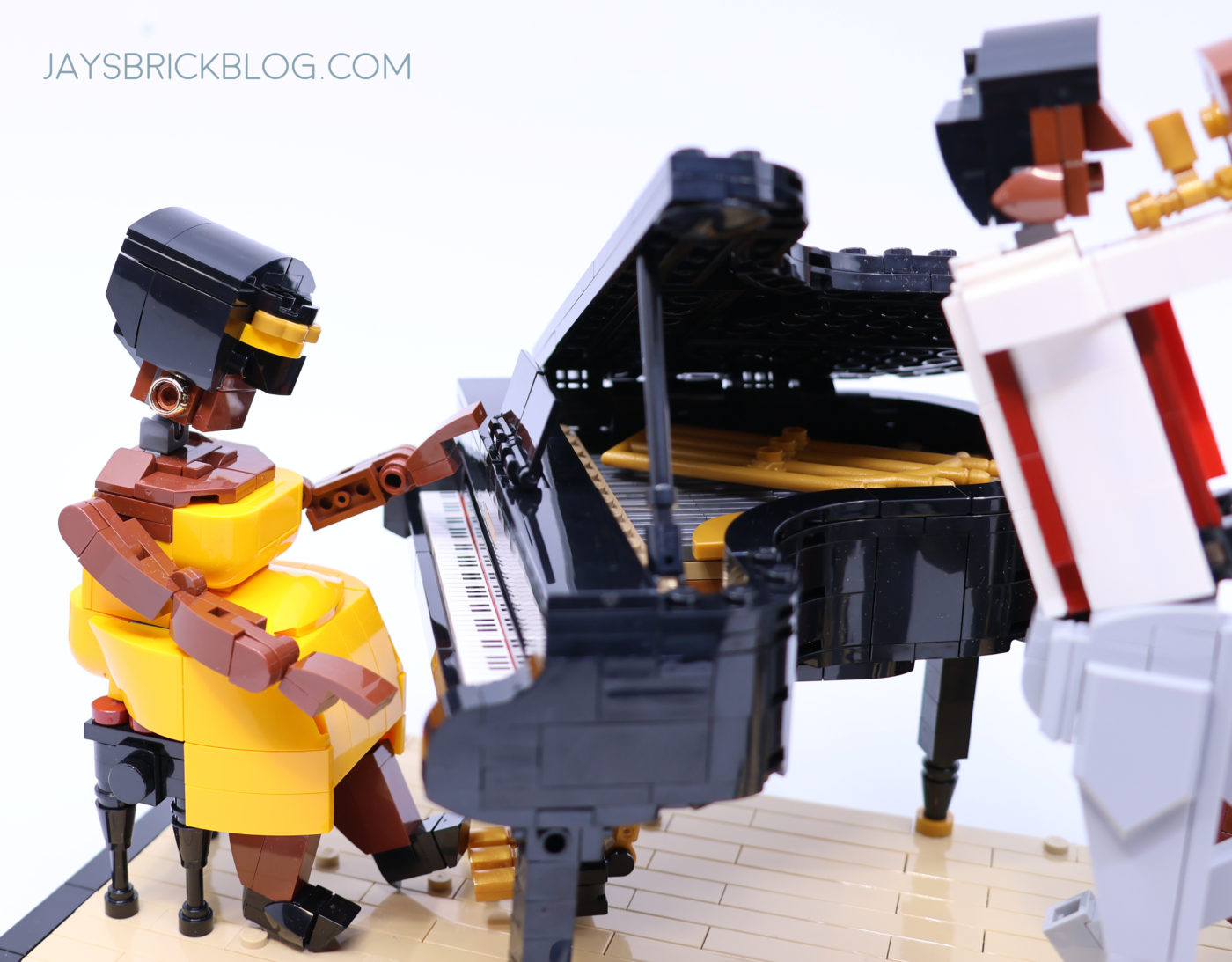
And last but not least is the Pianist, which is the biggest change from the original. The addition of a female, black Pianist is a fitting ode to legendary female pianists like Nina Simone, and to me, the original, lanky, classical-looking pianist felt out of place in a jazz band.
Her yellow dress contrasts amazingly against her darker skin, and provides a much needed flair of colour to the entire model.
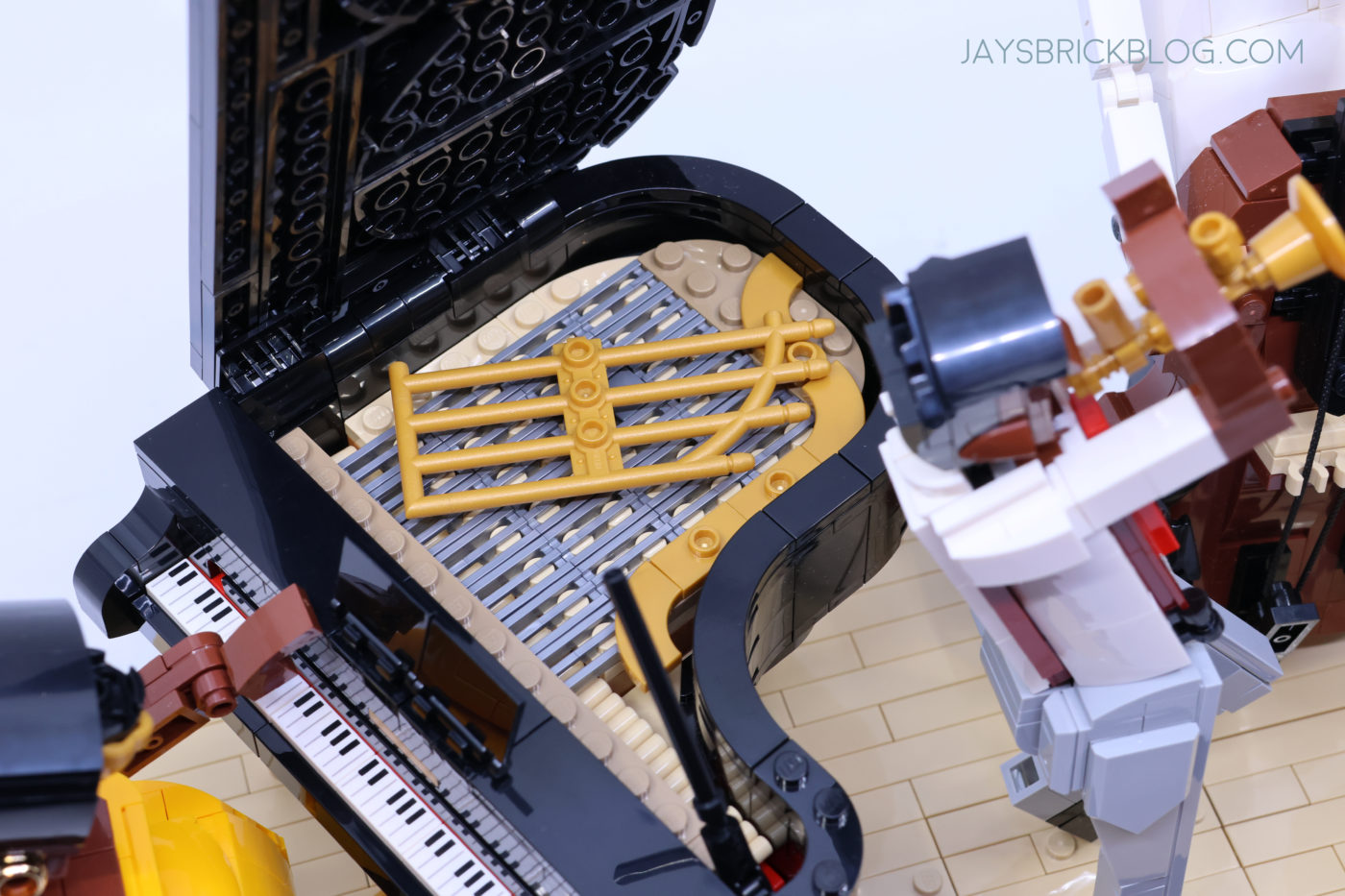
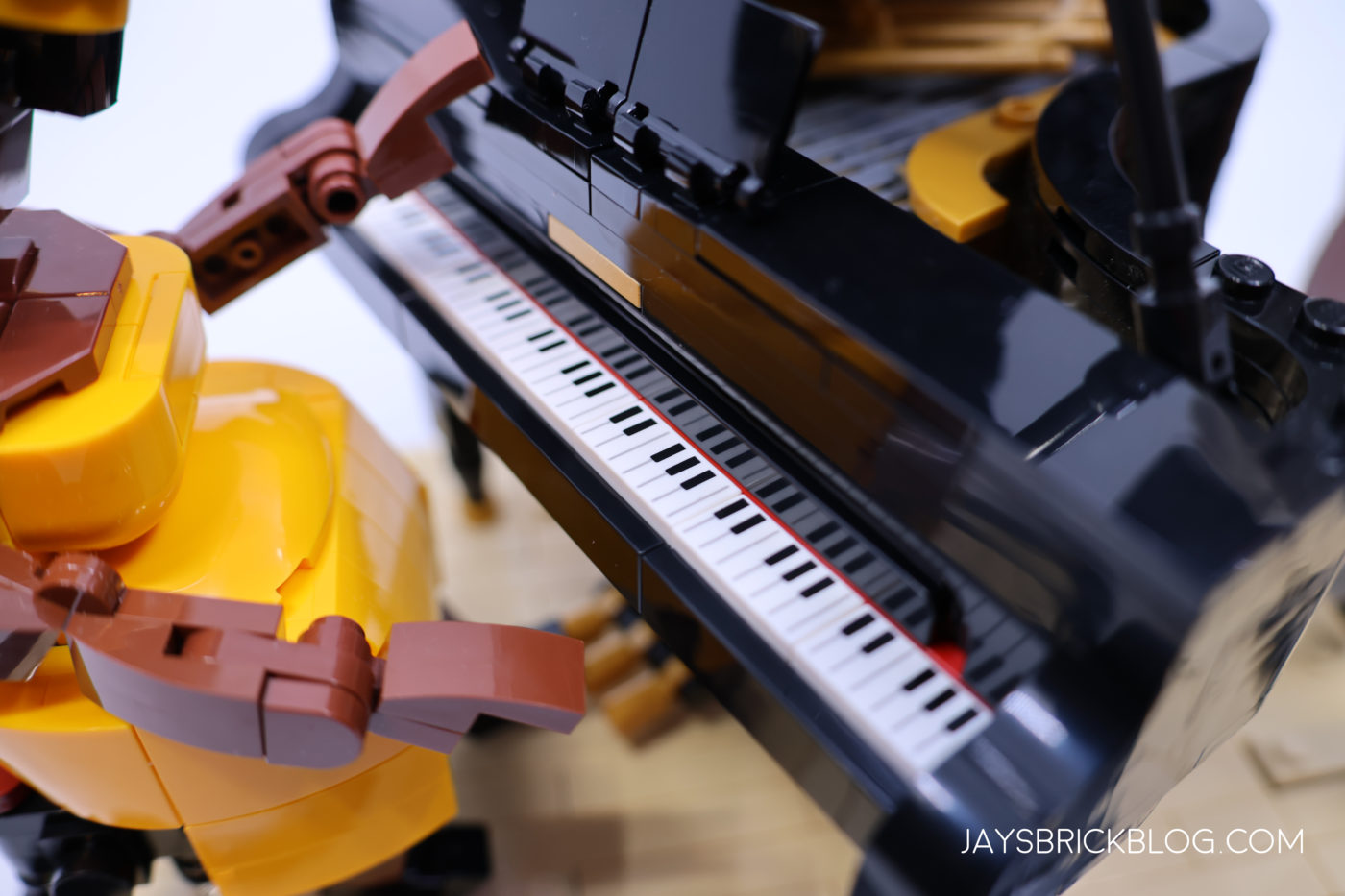
The Grand Piano was a very fun build, and the use of printed piano keys are more than welcome. It feels like a great, budget-friendly alternative to those that can’t afford 21323 Grand Piano, and in this scale, works wonderfully as the most complex musical instrument on stage.
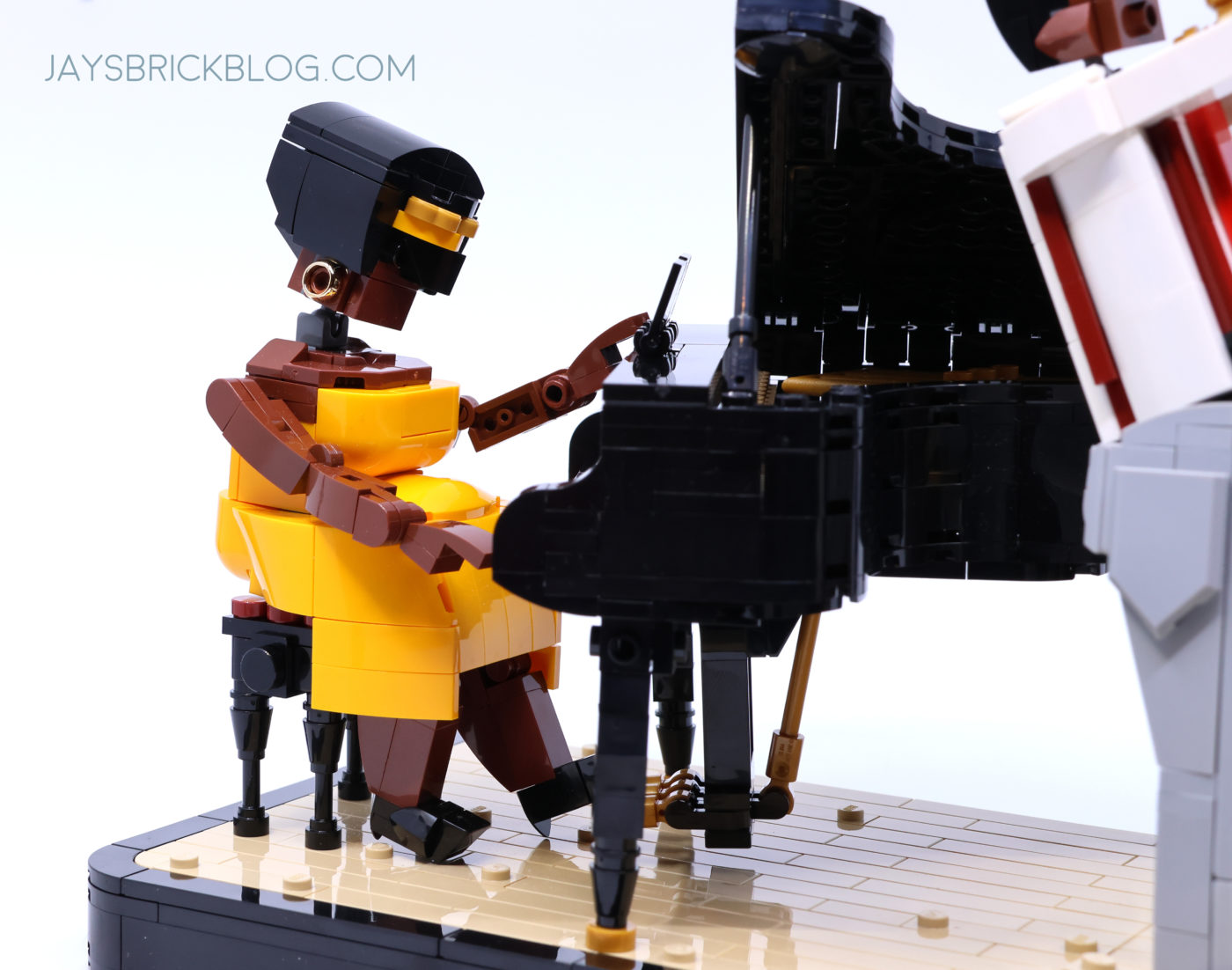
The pianist adds so much personality and relatability to the set, and the set designers did an incredible job with her curvy body, and how the “fabric” of her dress looks and feels. It’s very organic and natural, and you can almost audibly imagine her pipes as she belts out a solo.

I also really like the use of tiles for her cushioned seat. It’s a really subtle effect that grounds the model to reality.
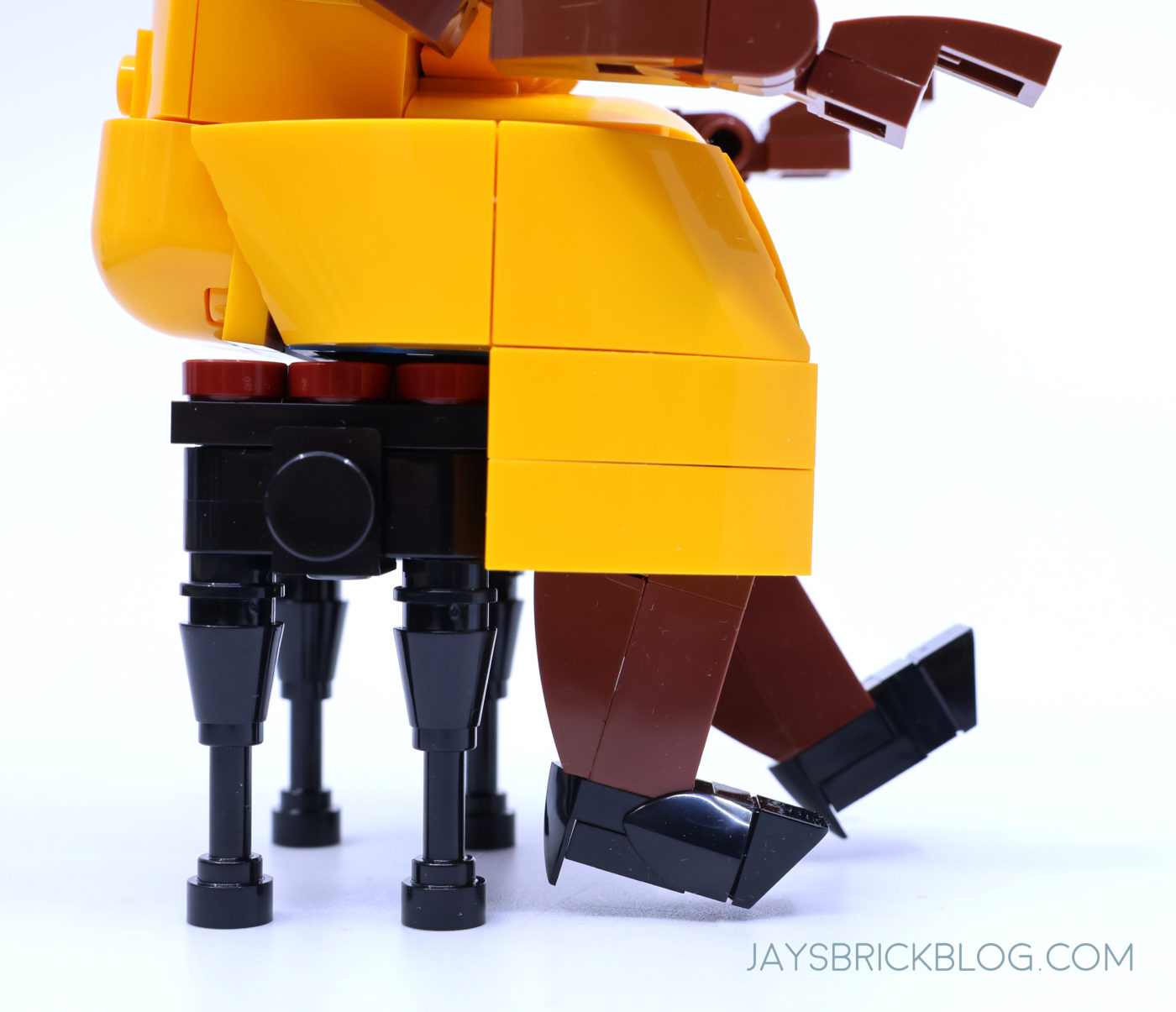
Oh, and her heels are also great. Lots of great footwear in the set, which I really appreciate.
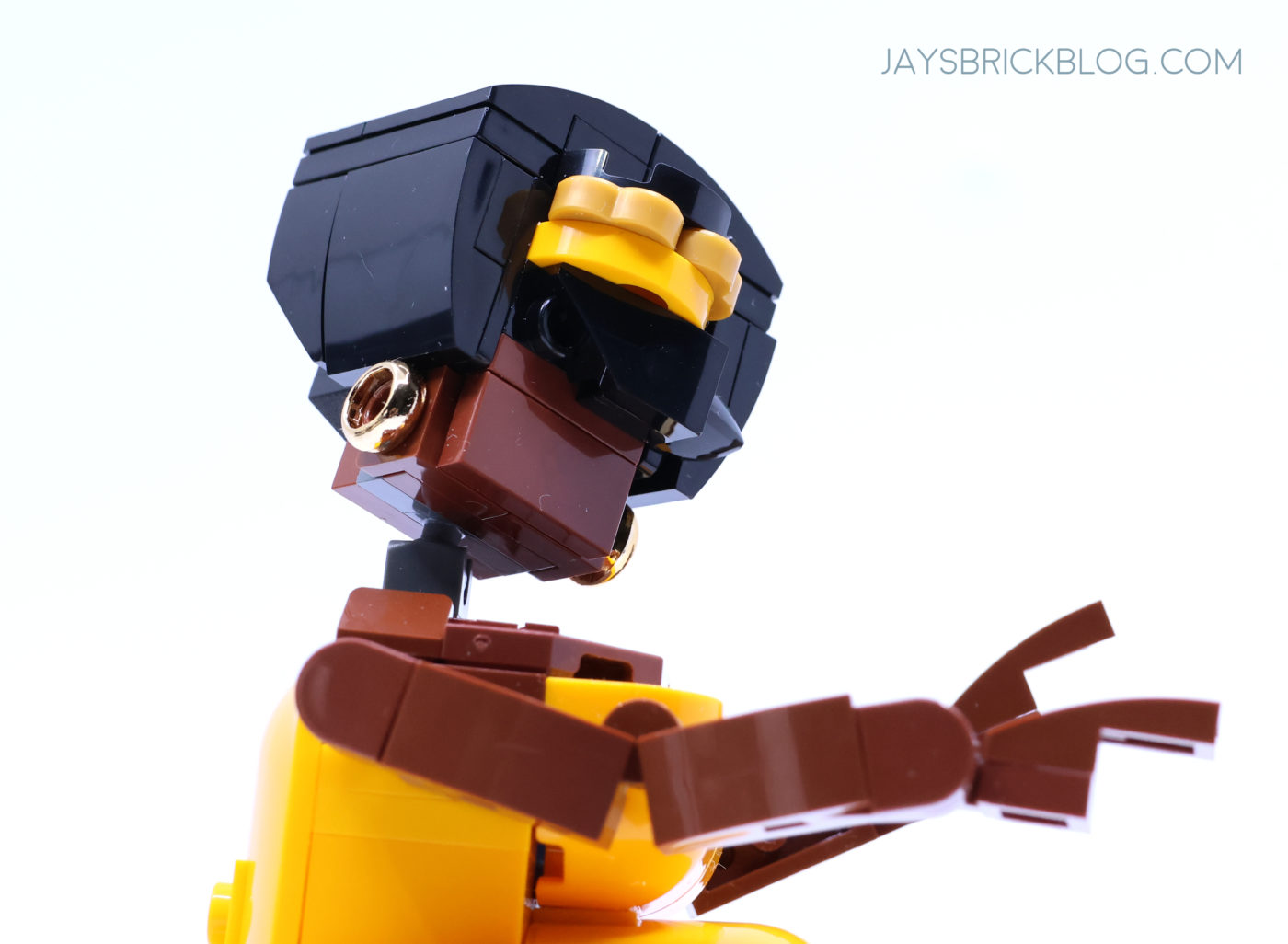
There are some lovely details such as the One Ring for her earrings, giving her outfit a hint of sparkle, as well as her headband, which also uses 2 pearl gold heart tiles.
Unfortunately, her neck being made out of grey ball sockets are quite distracting, as the grey clashes against her brown skin.
That said, if you can look past it, the pianist is a rich addition to the Jazz Quartet, and is my favourite musician in the group.
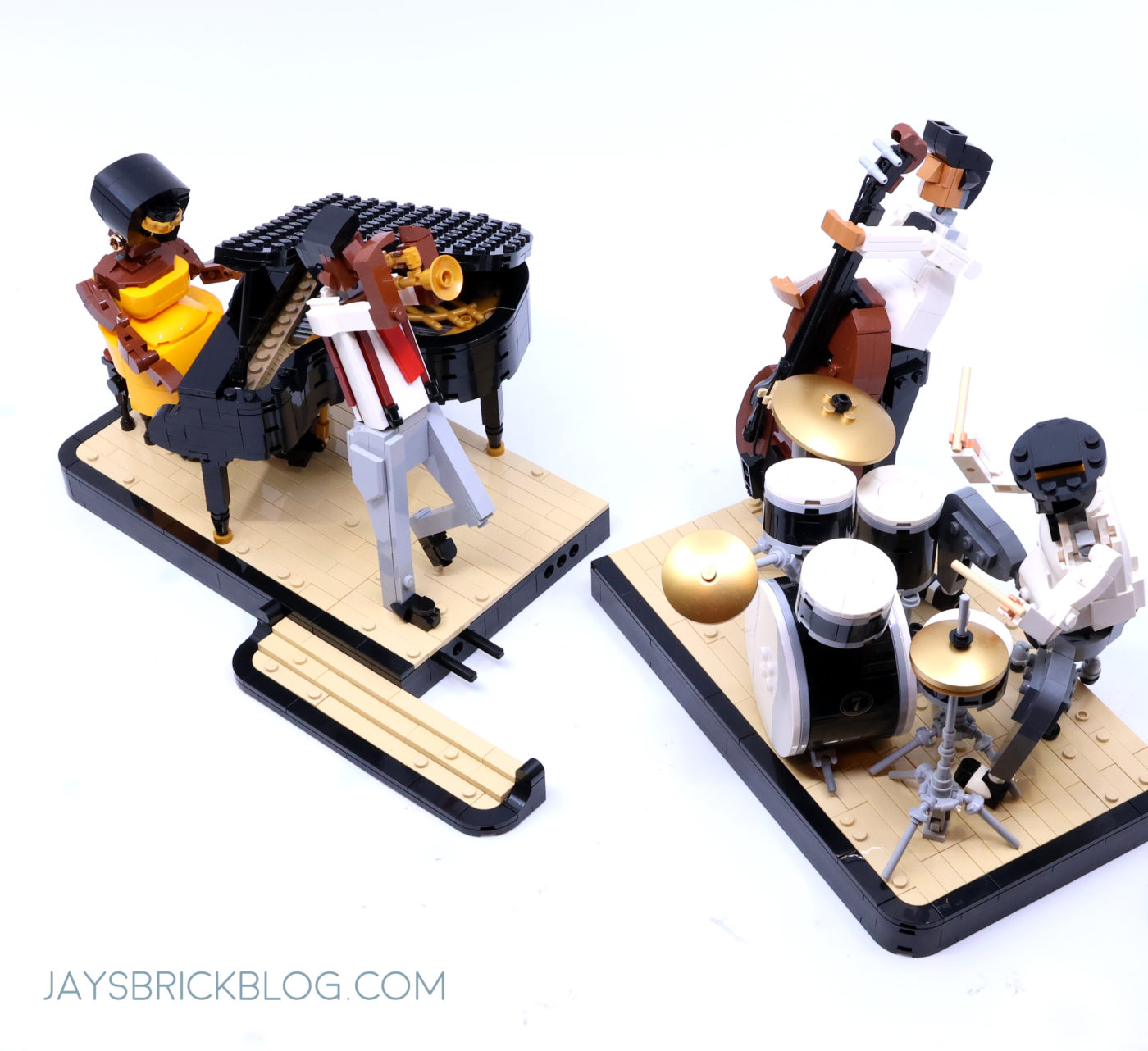
The stage can be broken up, giving you additional options on either to display the Quartet as a whole, or each individual musician can also be on their own, if space is an issue.
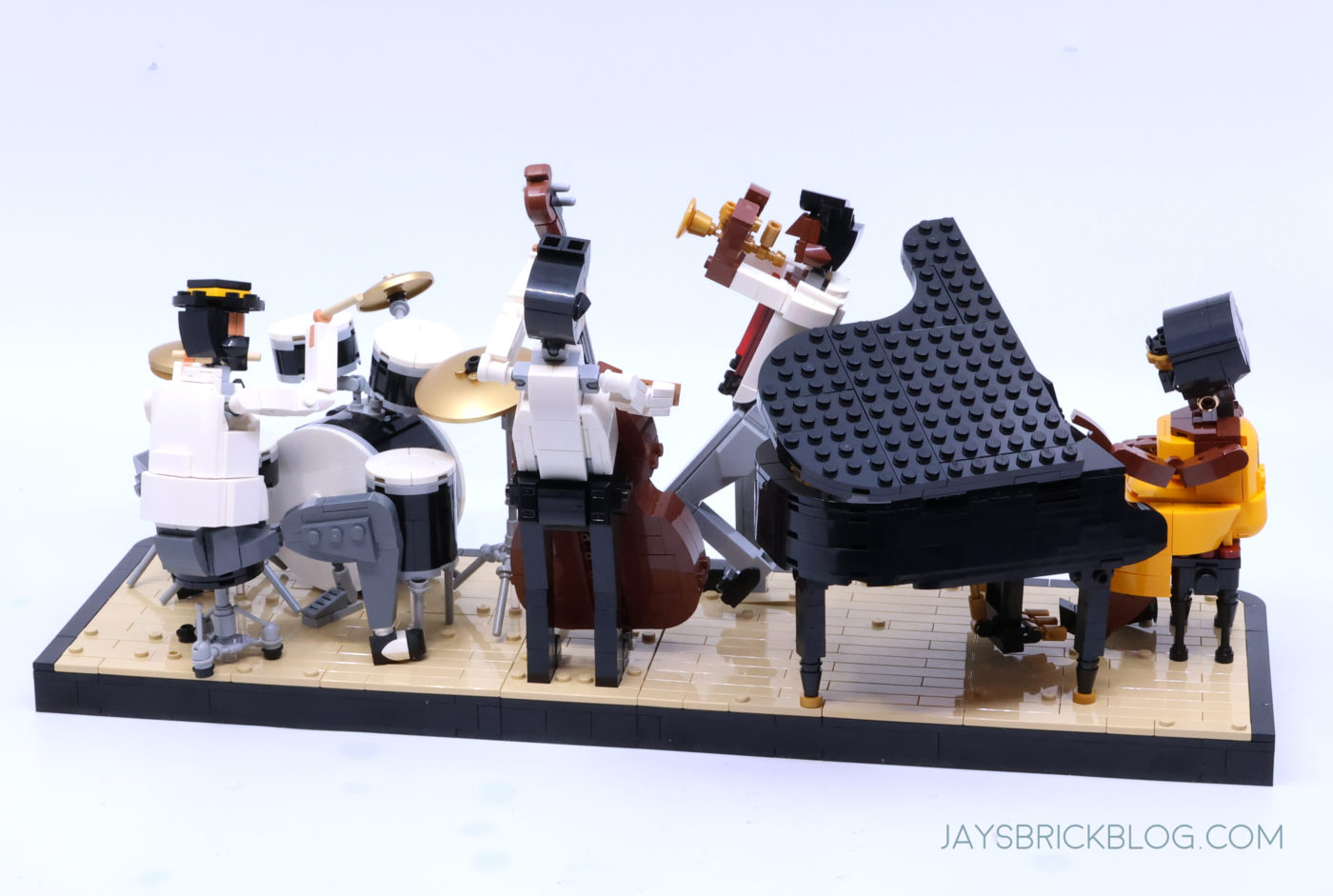
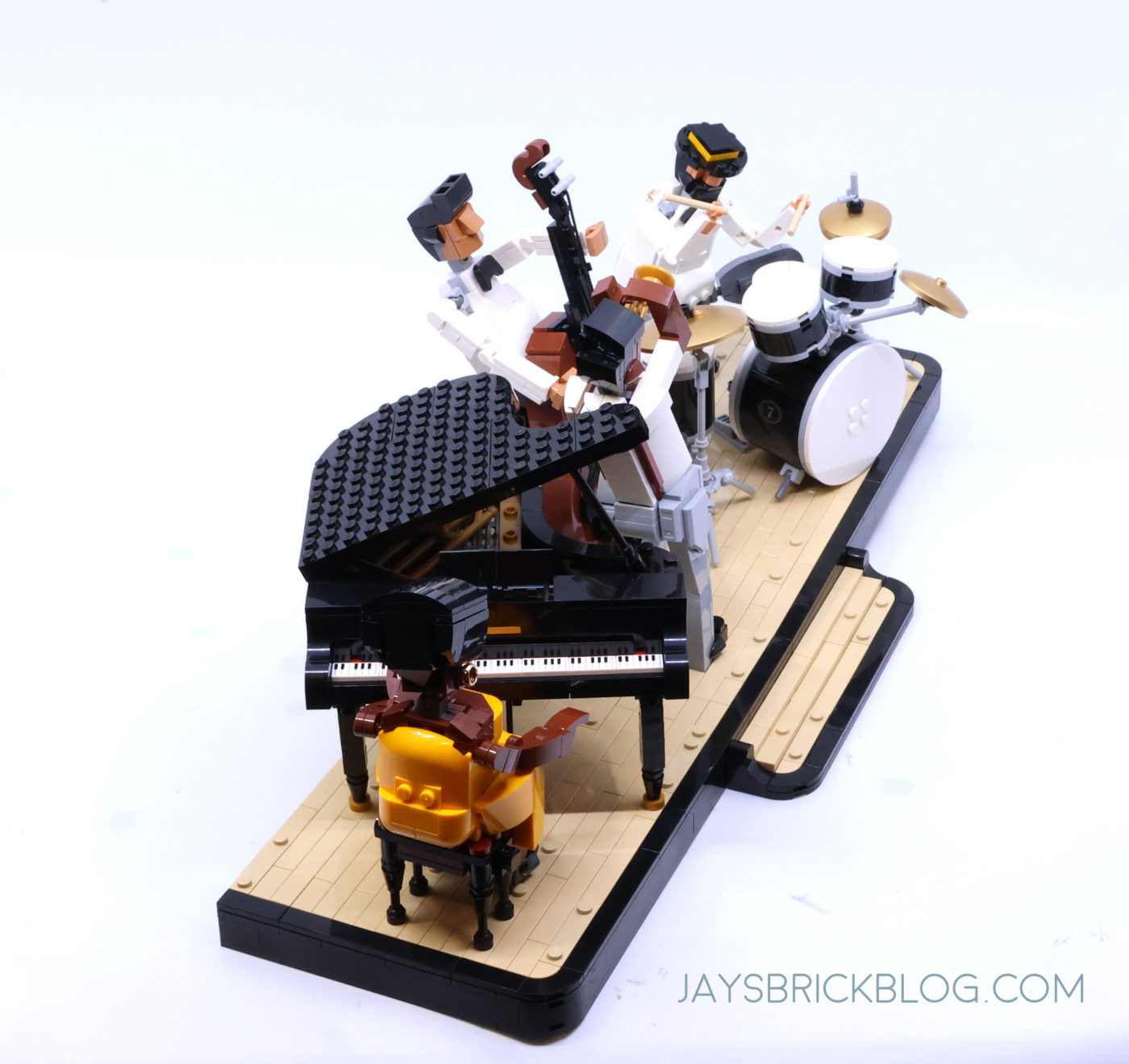
And here’s how the model looks like from different angles. Obviously, displayed and admired from the front is the desired angle.
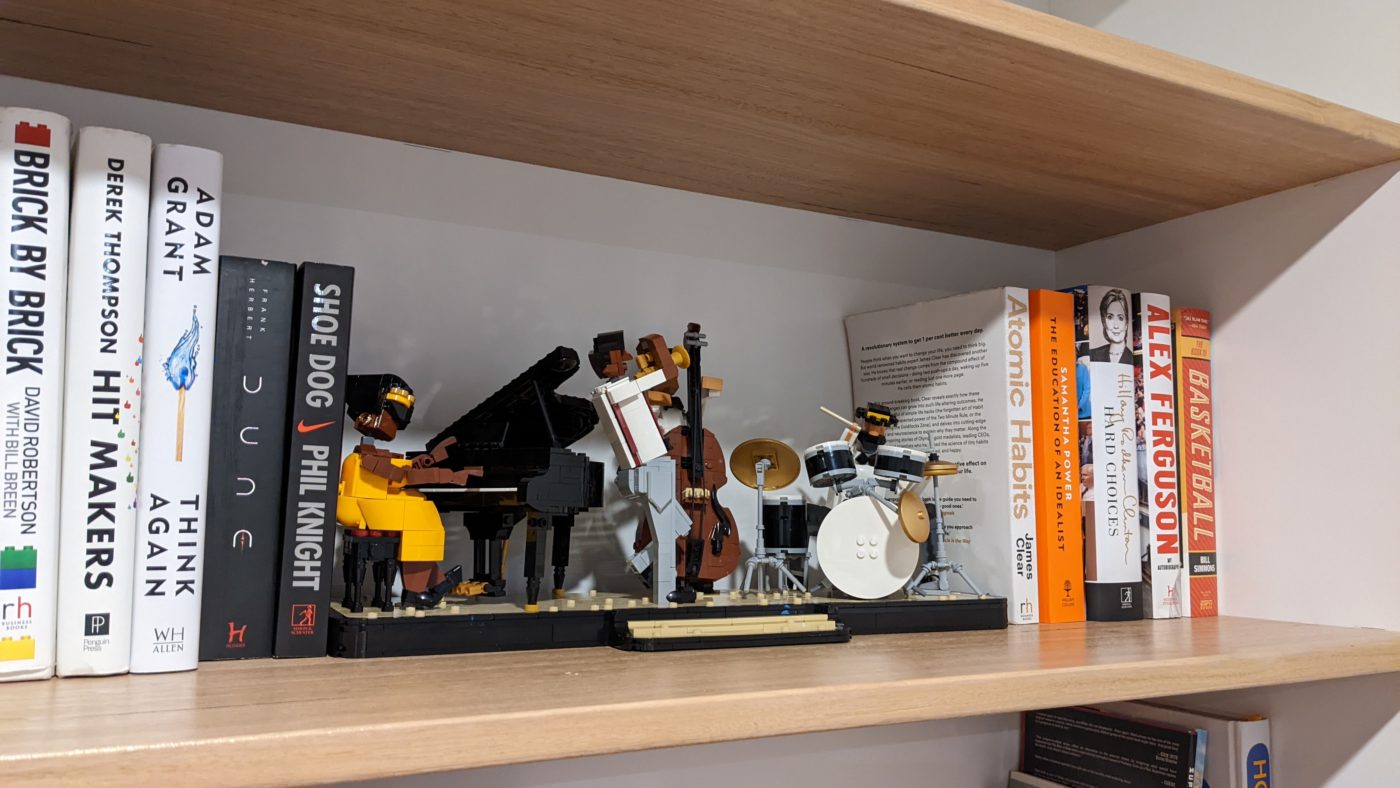
21334 Jazz Quartet is a really nice display model, with goldilocks proportions that ensure that it stands out, yet doesn’t seek out attention by being overly large, or with bright colours.
Mine is displayed on my bookshelf, and I really like how it looks there. It would also look great on surfaces like desks, or if you have a music room/music listening area, it would be a great addition to enhance your music-listening experience, especially if Jazz is your genre of choice.

What I liked:
- A wonderful, subtle and beautiful display model
- Fun and varied group build experience
- Stunning graphics on the manual
- Pretty good value as the final model is quite large
- Overall, a very elegant model
What I didn’t like:
- Grey ball joints look awkward, especially on the pianist
- Limited in what else you can do with it
FINAL THOUGHTS:
21334 Jazz Quartet is a really refreshing LEGO set that excels as a display model. The Jazz Quartet, frozen in time and space manage to keep the essence of the original model, while expanding on the concept with additions like the female pianist.
It’s one of the most elegant LEGO sets available in 2022, if not ever, at a price-point that doesn’t feel unattainably expensive. The finished model evokes feelings of a buildable art-piece that’s clever, and doesn’t compromise on aesthetics, at least when you look at it from afar.
Add in an engaging building experience that’s better when shared, and you have a great all-rounder that’s aimed at more discerning (read: adult) builders who can find joy in displaying this set in their homes or workplaces.
A lot that goes into a LEGO set is unseen, and translating the musicians into buildable form that’s stable, accessible and still retain most of Hsinwei’s original concept is an admirable job, although some of the changes might leave supports of the original scratching their head.
The tan stage is perhaps the most contentious, but speaking to the designers, I discovered that it was for aesthetic purposes to make the entire set look brighter, which makes sense as it’s designed for display, and you don’t want it to blend in to bookshelves, or dark surfaces.
The incredible graphics on the instruction tie the entire package together, making this feel like a really well-considered LEGO set that makes for a fancy gift, especially for lovers of Jazz.
It’s not for everyone, and if you’re someone that prefers minifigures, playability and for your LEGO sets to look like toys, you’re not the target audience for this set, which is totally fine. I appreciate that LEGO Ideas can explore so many different product types, and this one, as an elegant display piece aligns with how I like my LEGO (in certain parts of my house) – classy, understated and aesthetically pleasing.
If you’re a fan of Jazz, and enjoy models like Vincent Van Gogh: The Starry Night or the Botanical Collection, you’ll like the Jazz Quartet.
Rating and score: 4/5 ★★★★✰
Build [4] – A fun, engaging build where you’ll be spoiled by nice part usage, and complex techniques
Real Value [4] – It feels like a really substantial set, given its size and display presence for the price
Innovation [3] – This set is more polished than it is innovative
Coolness [4] – I like jazz, and aesthetic display models, so this set exudes coolness for me
Keepability [4] – As this set doesn’t occupy my usual “LEGO zones”, I can see it being on display for a long period of time.
Thanks so much for reading this review of 21334 Jazz Quartet which is available now from LEGO.com, or your local LEGO store.
Special thanks to LEGO for sending this set over for an early review!
What do you think of the Jazz Quartet? Do you like the changes LEGO made?
To get the latest LEGO news and LEGO Reviews straight in your inbox, subscribe via email, or you can also follow on Google News, or socials on Facebook, Instagram (@jayong28), Twitter or subscribe to the Jay’s Brick Blog Youtube channel.







